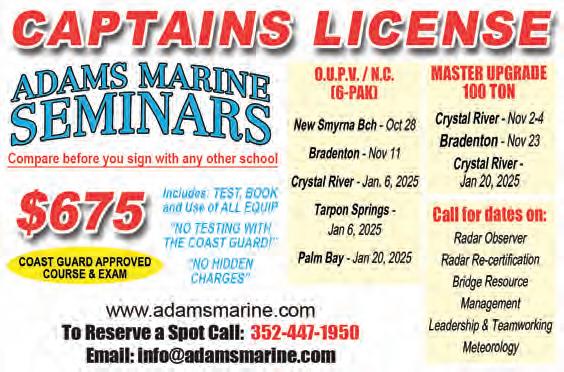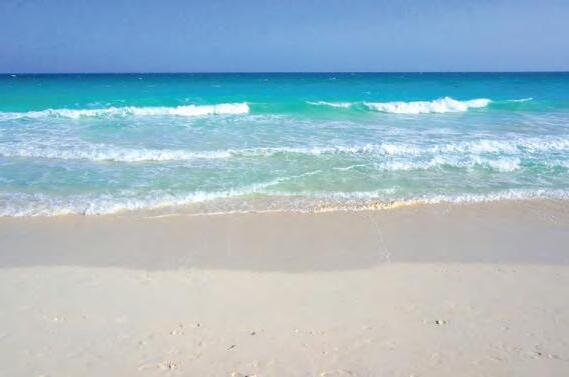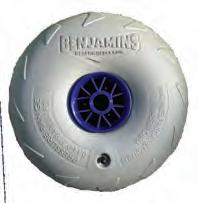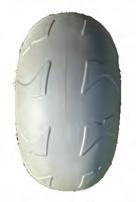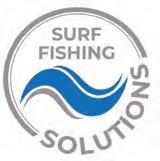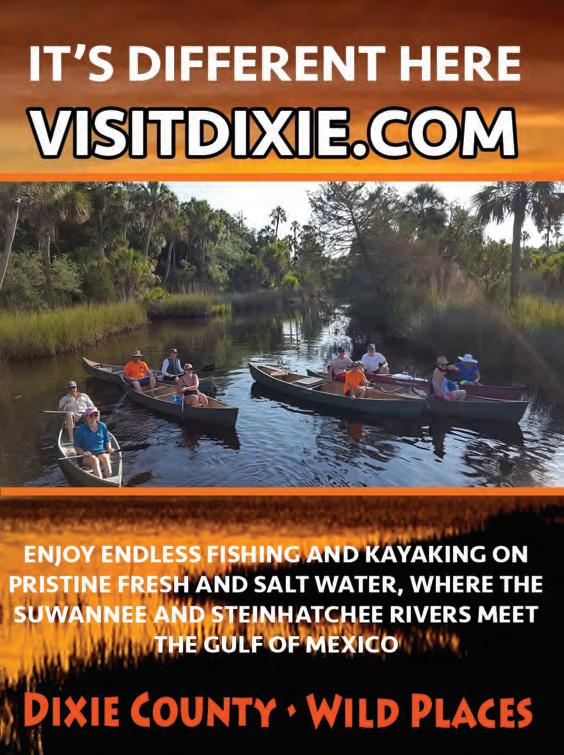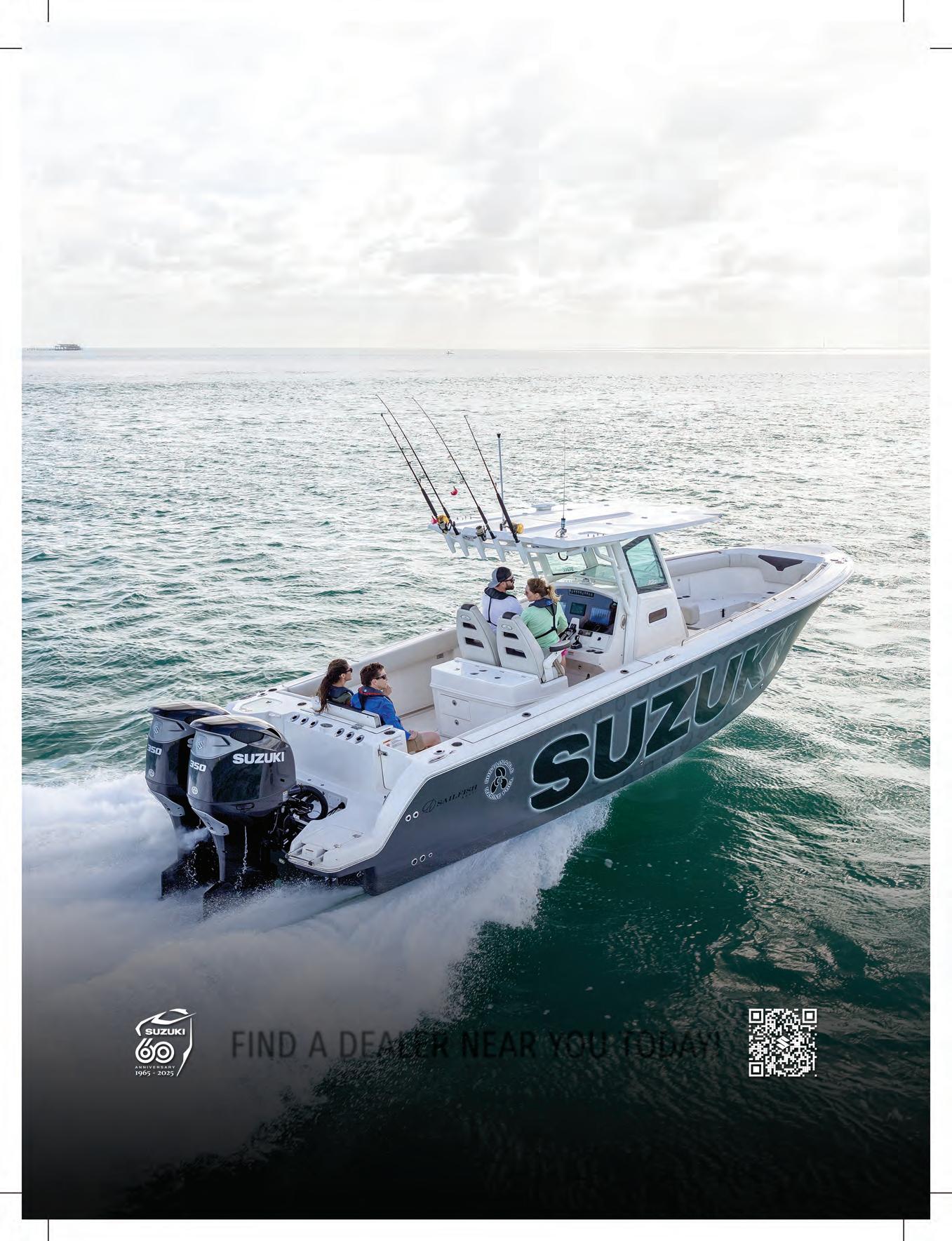

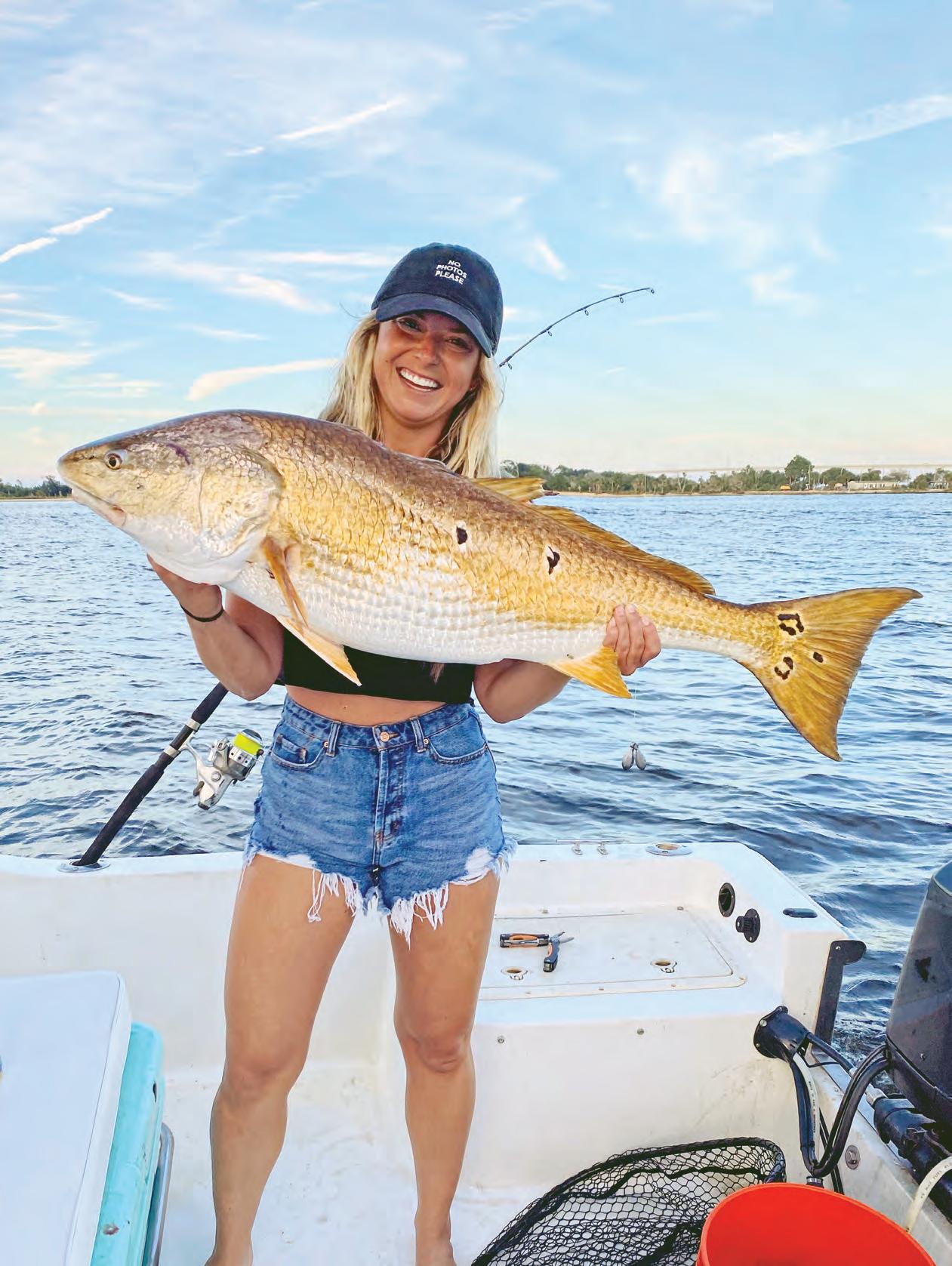
















Are you ready to embark on your next on-water adventure? Before you set sail, here are ve things to know about boat insurance.
1. Boat insurance isn’t just for accidents
With comprehensive coverage, you’ll also be protected nancially for theft, vandalism, and unexpected events like storms if you need repairs or replacements due to damage.
2. Accidents can happen to anyone
When accidents happen, boat insurance offers liability coverage for damages or injuries you cause while boating, up to speci ed limits. It can also cover lawsuit costs if you’re sued.
3. Boat insurance can cover medical payments
Boat insurance offers a range of optional medical payments coverage limits, helping to cover medical expenses if you’re in an accident or someone is hurt on your boat, regardless of fault.
4. Most lenders require boat insurance
If you nanced your boat, you’ll likely need boat insurance since most lenders require boat insurance to protect their investment. Additionally, some marinas or municipalities require proof of insurance for docking.
5. Progressive offers specialized boat coverages Ever worry about getting stuck on the water? Progressive’s Sign & Glide® On-Water Towing coverage** can help. It’s an additional coverage that steps in if your boat is disabled or breaks down on the water, paying for on-water towing, jump starts, soft ungroundings, and fuel delivery. Fuel cost isn’t included.
Don’t let unforeseen circumstances disrupt your voyage. Cruise with con dence thanks to Progressive Boat insurance. Because when it comes to your boat, peace of mind is the ultimate luxury.
Scan to get a quote in as little as 4 minutes.
to learn more.



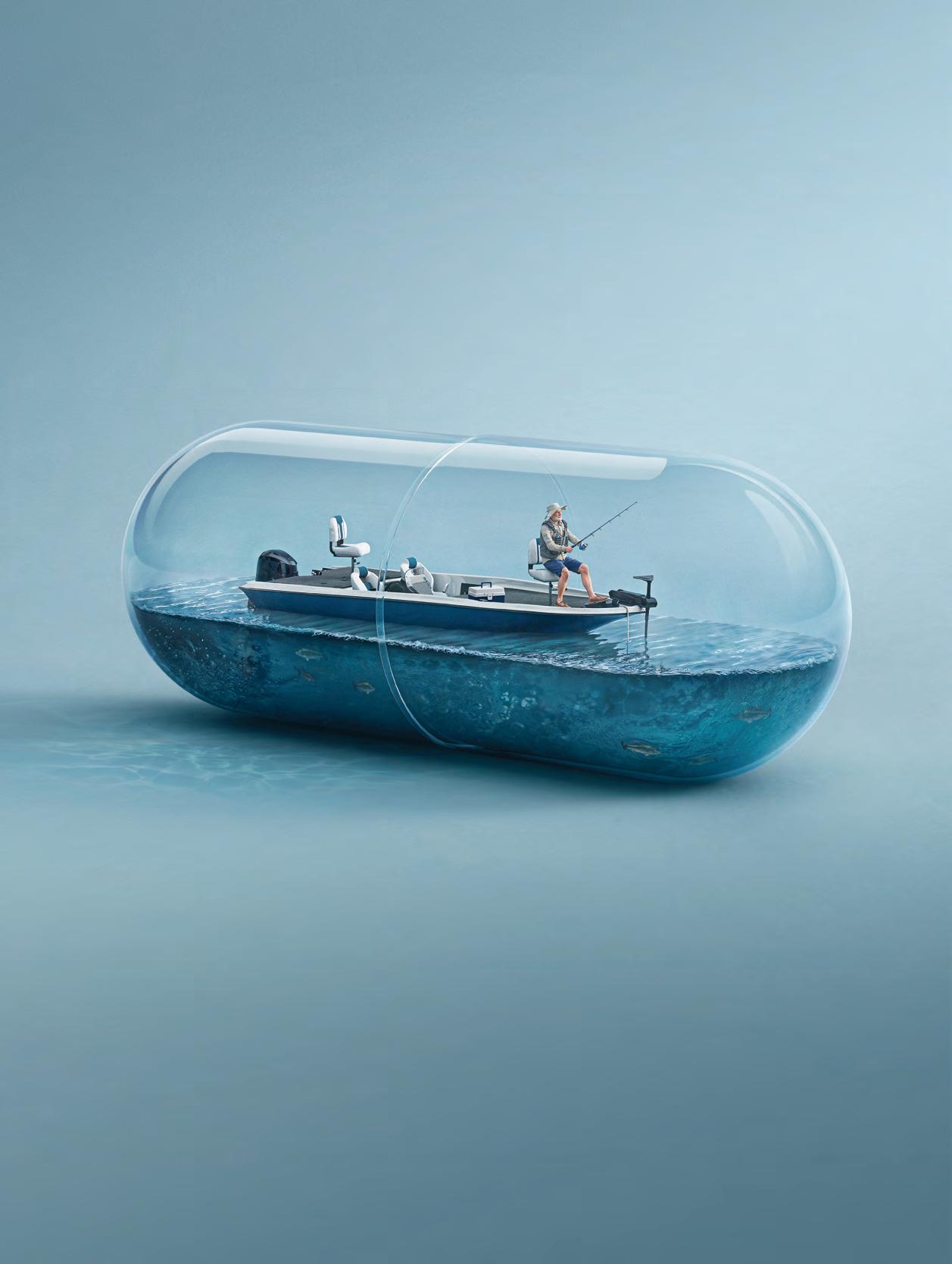
















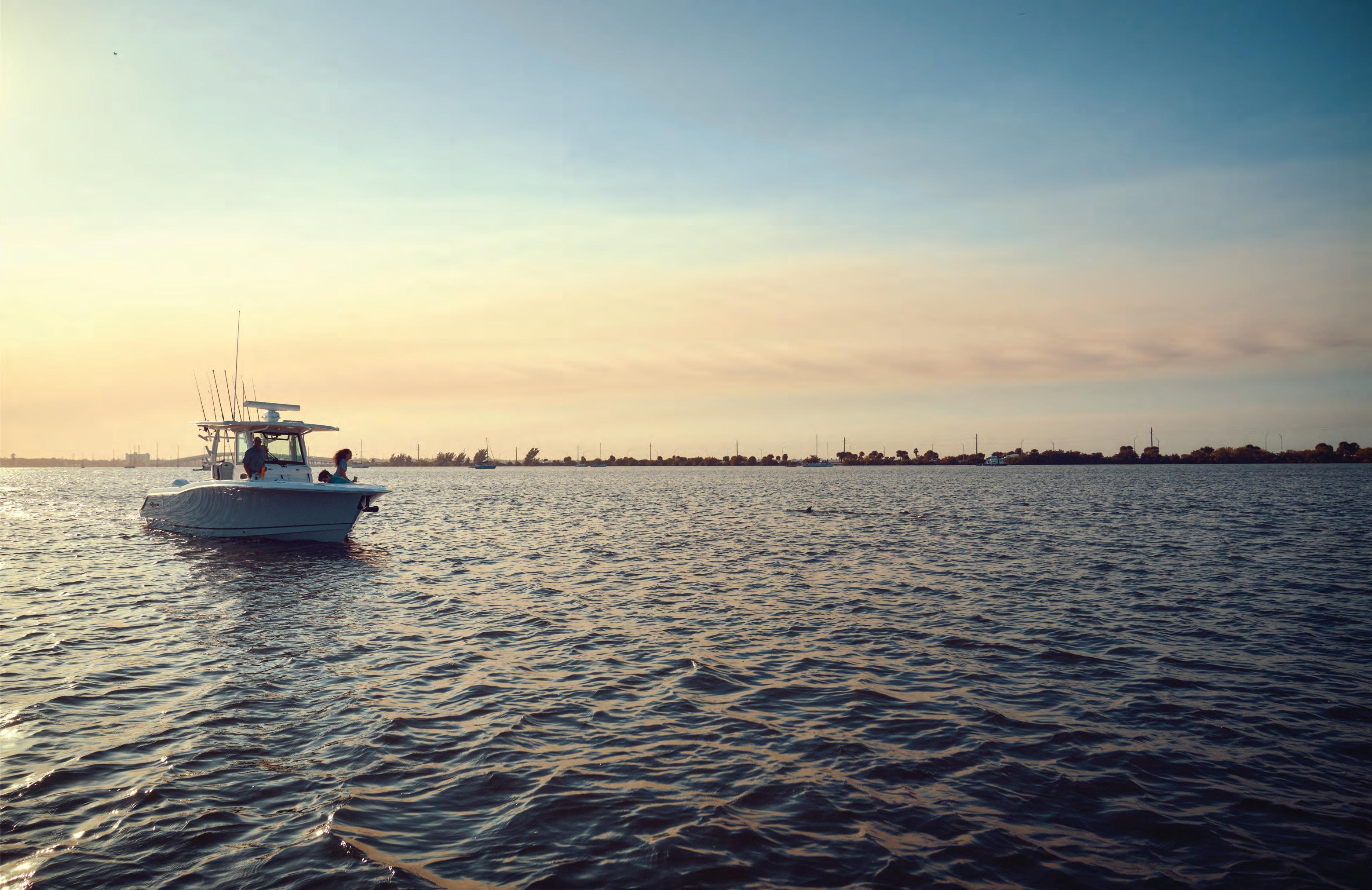

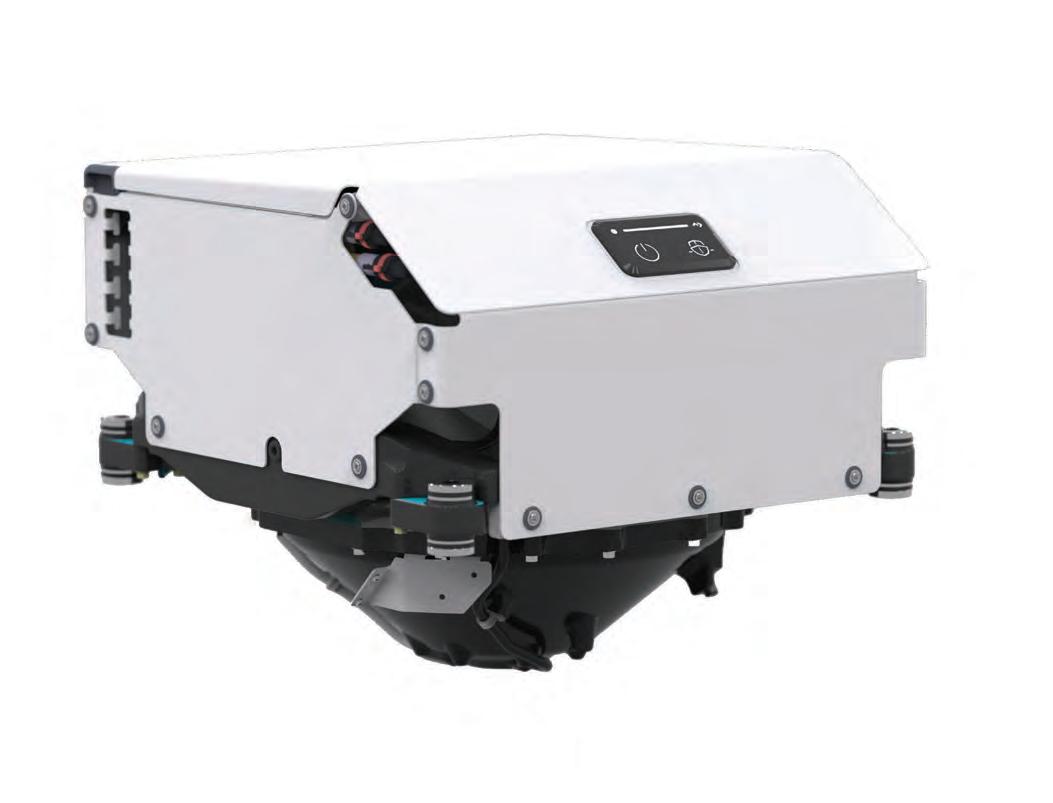

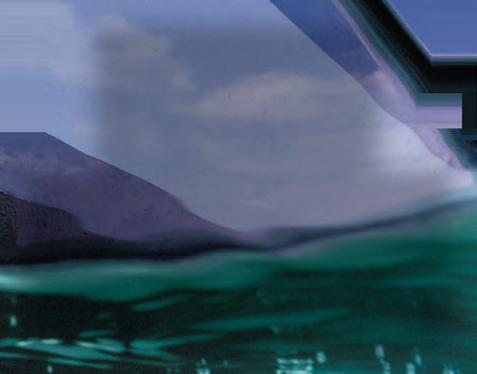
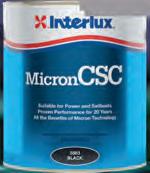
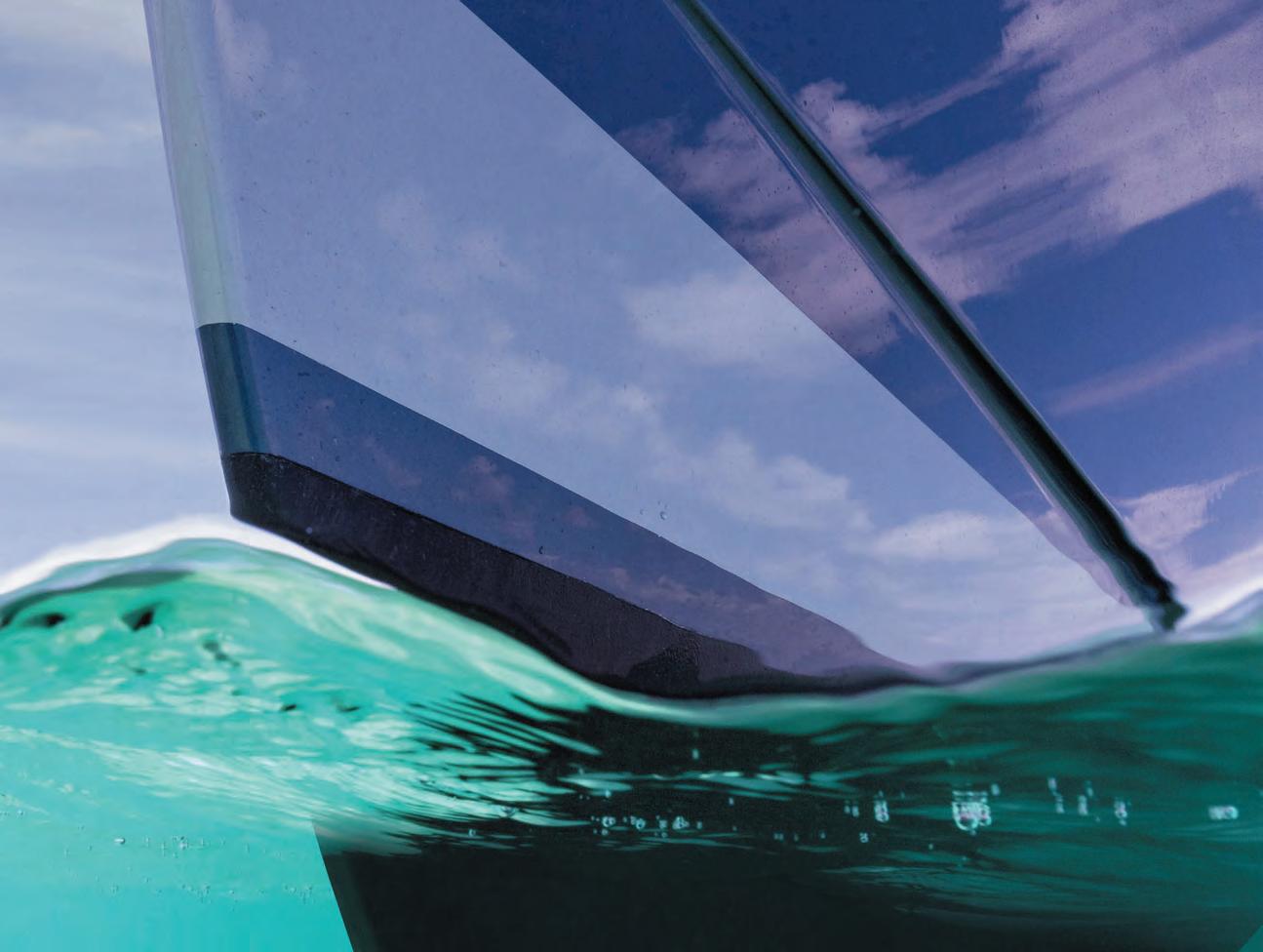



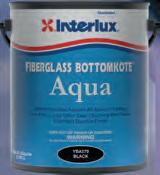


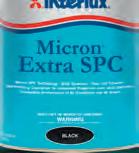
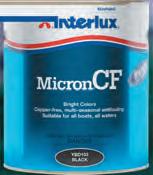
Interlux® fouling control products not only improve your performance by protecting your hull from fouling, they also protect against the spread of invasive species, safeguarding your local waters when exploring new regions, therefore helping you make a difference by looking after the waters that have provided you with enjoyment and freedom for so many years.
Like you, we have a passion for boating. We provide boaters the hull protection they deserve with over 140 years of cutting‑edge science, technology and expertise. You can expect only the best from every Interlux® yacht paint product, providing you the confidence to explore your world.
Relentless performance for every yacht, everywhere, every time. interlux.com

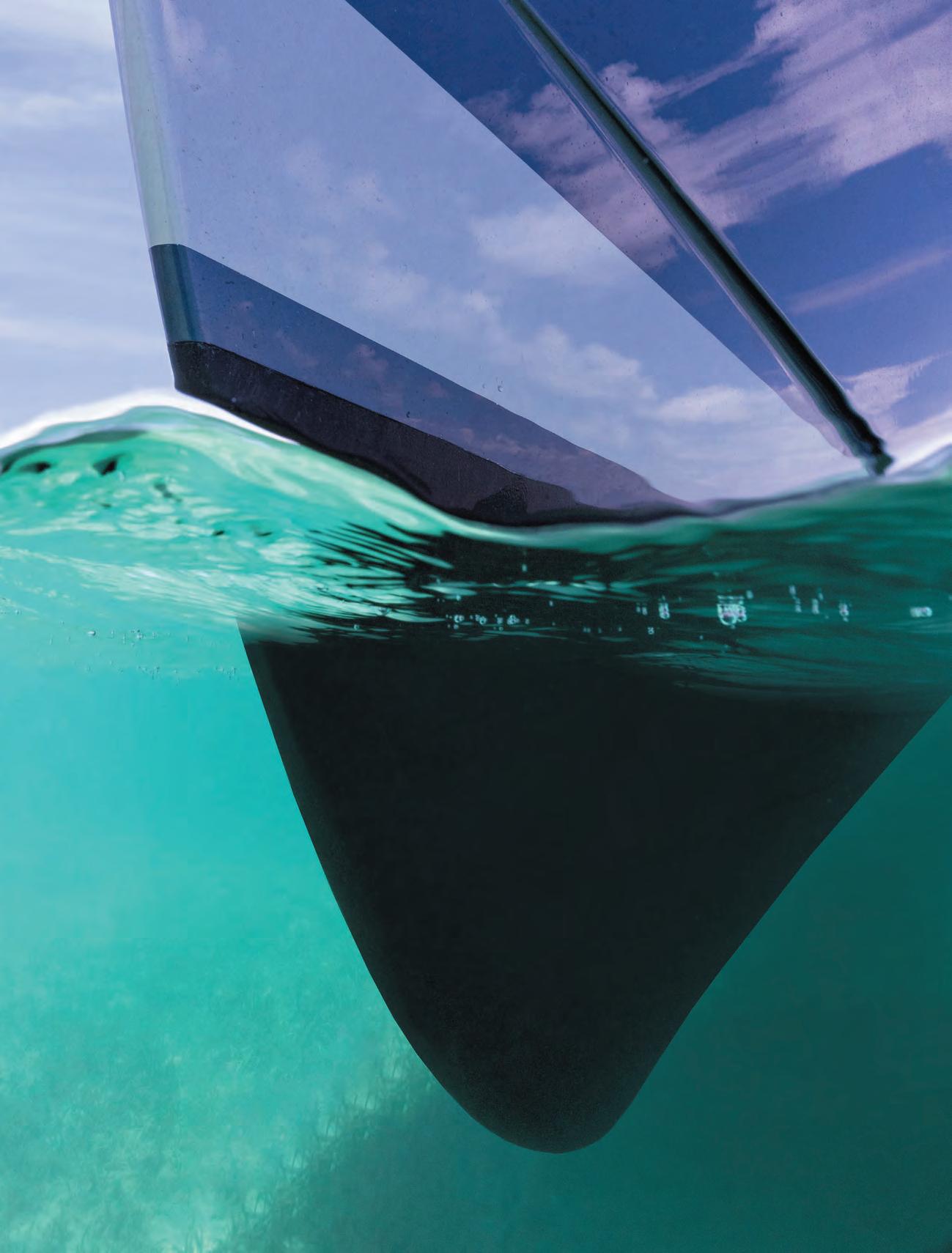



Capt. Mike Smith
Have you ever tried to use big dead baits to catch huge redfish? If you haven’t, then you should.

Many of the larger predatory fish prefer eating fresh, dead baits over live baits so they can save energy.
The odds of becoming an over slot redfish are at least a million to one. An overslot redfish has figured out not only how to avoid predators and how to conserve energy when finding food. That is why dead baits work so well for catching older, wiser and larger redfish.
The best dead baits for redfish are: a large blue crab cut in half, a butterflied large pinfish with its tail cut off, a chunk of ladyfish, and a chunk of bluefish. The key to catching redfish instead of catfish when dead bait fishing is by using enormous dead baits. You want to use baits at least eight inches long. Catfish always seem to find the bait first and most catfish can’t eat an eight inch dead bait.
Quite often you will catch your monster redfish and notice catfish slime on your line. This tells you that a catfish found your bait first but was unable to swallow it. If you are catching catfish with your dead baits, then you have to go bigger.
Pro Tip: Make sure to use at least a 5/0 circle hook and just enough weight to keep the bait stationary on the bottom. If you let the tide drag the bait across the bottom the redfish will have trouble finding it. But if you use too much weight the fish will often feel it and let go of the bait before getting hooked.
Circle hooks are much less likely to get swallowed and mortally wounding the fish, unlike a J hook. A J hook will often get swallowed if you are not constantly paying attention to your line.
When using dead baits for redfish keep the rod in a rod holder. Rod holders are much better at hooking redfish with circle hooks than we are.

Keith caught this monster redfish with an 8-inch chunk of bluefish along a drop off in Florida’s Indian River Lagoon.
When the redfish picks up the bait and swims off with it, the hook will lodge right in the corner of the fish’s mouth.
The best tackle for catching enormous redfish with dead baits is a medium heavy seven-foot-six-inch rod coupled with at least a 5000 series reel. Spool your reel with 30-pound braided line and make sure to have at least a 30-pound leader attached to the hook.
You can certainly catch a 40-inch redfish with a smaller rod and reel combo but the fish will be half dead by the time you get it landed. In that weakened state the fish will sometimes fall prey to a nearby dolphin or shark. There is no sense killing a big breeder redfish that you cannot harvest anyway.
Capt. Mike Smith, owner of Fish Your Ass Off Charters, is an inshore fishing guide who has been fishing the inshore waters, oyster bars and grass flats of Florida for more than 40 years. Reach him at (561) 339-2317, email: contact@fishyourassoff.com or visit fishyourassoff.com.


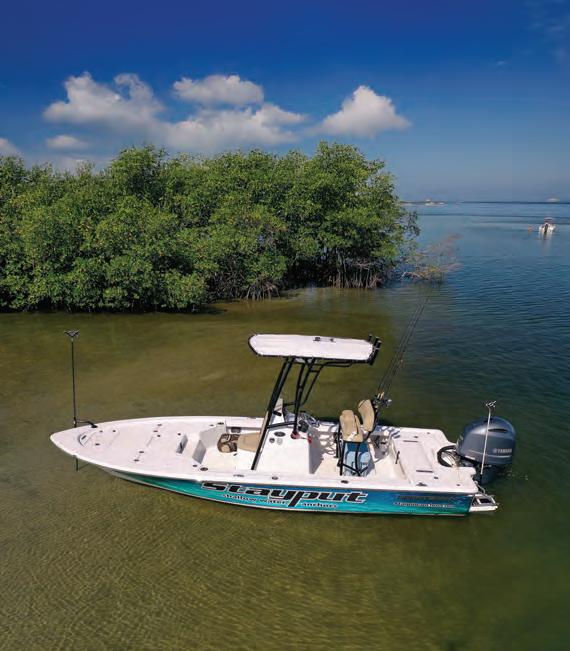
BY NPFL PROFESSIONAL ANGLER JOEY BLOOM
The first cool mornings of fall always bring a little excitement for me. When I back the boat down the ramp and see mist rising off the water, I know the season is changing and the bass are about to do the same. Down here in the Southeast, the fall transition is one of the most unpredictable—but also one of the most rewarding— times of the year.
The key is bait. As soon as water temps slide from the 90s into the mid-70s, shad begin their migration out of the main lake and into the creeks or shallow shorelines. They’re chasing plankton, and the bass are never far behind. If you can find the bait, you’ll find the fish. I don’t even bother making a cast until I see shad flickering on the surface or lighting up my electronics.


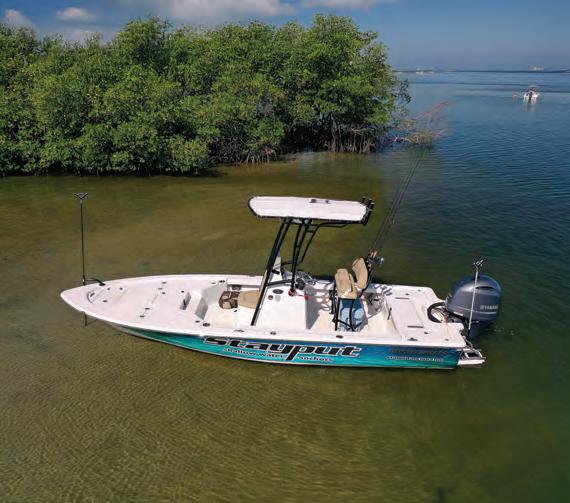

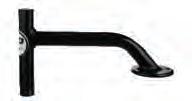



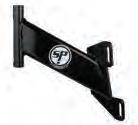

My mornings usually start with topwater or a shad-colored swim jig. A walking bait is one of my favorites to throw across the mouth of a pocket, and it can trigger some of the most violent strikes of the season. I’ll never forget a morning last October when a seven-pounder came out of two feet of water and nearly ripped the rod out of my hand. That’s fall bass fishing— when they decide to eat, they don’t play around.
As the sun gets higher, I shift gears. Shallow wood, laydowns, docks and grass edges become prime ambush points, and that’s when I reach for a squarebill crankbait. I like squarebills because they’ve got just the right wobble and durability to grind through cover. The trick is to make contact—bump that crankbait off a stump, dock, or tick it through grass. Those deflections are what trigger bites. Covering water quickly is important because bass are constantly on the move, shadowing those bait schools.
But not every fish in the lake makes the same move at the same time. Some of the bigger, older bass stay out deeper longer. For those, I keep a Carolina rig handy, and I’ve had great success pairing it with Bait Cave Customs hand-poured soft plastics. That slow drag across a secondary point can tempt those stubborn deep fish that won’t chase a moving bait.
Weather plays a huge role, too. A cold front will slow everything down, and that’s when I switch to finesse—something like a Bait Cave Customs, Cave Club finesse worm on a shaky head, worked methodically. On the flip side, a cloudy, stable day can set off a feeding frenzy, and that’s the time to throw reaction baits and keep covering water. Fall fishing here is a constant adjustment game, and you have to be willing to change with the conditions.
At the end of the day, the fall transition is like putting a puzzle together. The pieces change daily—sometimes hourly—but once you figure out where the bait is, how the bass are relating, and what they’ll react to, the action can be phenomenal. It’s the season where I cover the most water, throw the widest variety of baits, and stay the most flexible.
For me, that’s what makes fall in the Southeast so special. It’s unpredictable, challenging, and full of opportunity. And when everything lines up, it’s some of the best bass fishing of the entire year. With the right mindset—and the right tackle—you can make this season one to remember. Follow all of Joey Bloom’s fishing and fun on Instagram, Facebook, and YouTube at Joey Bloom Fishing.




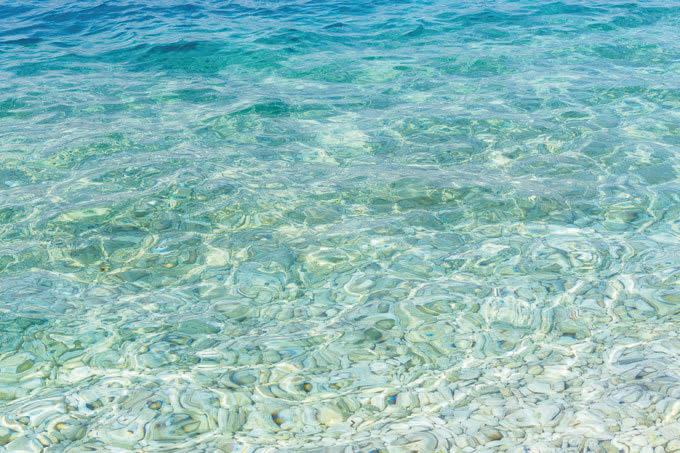








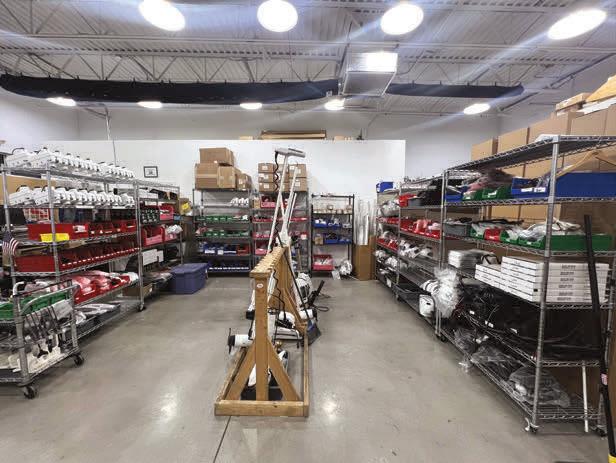


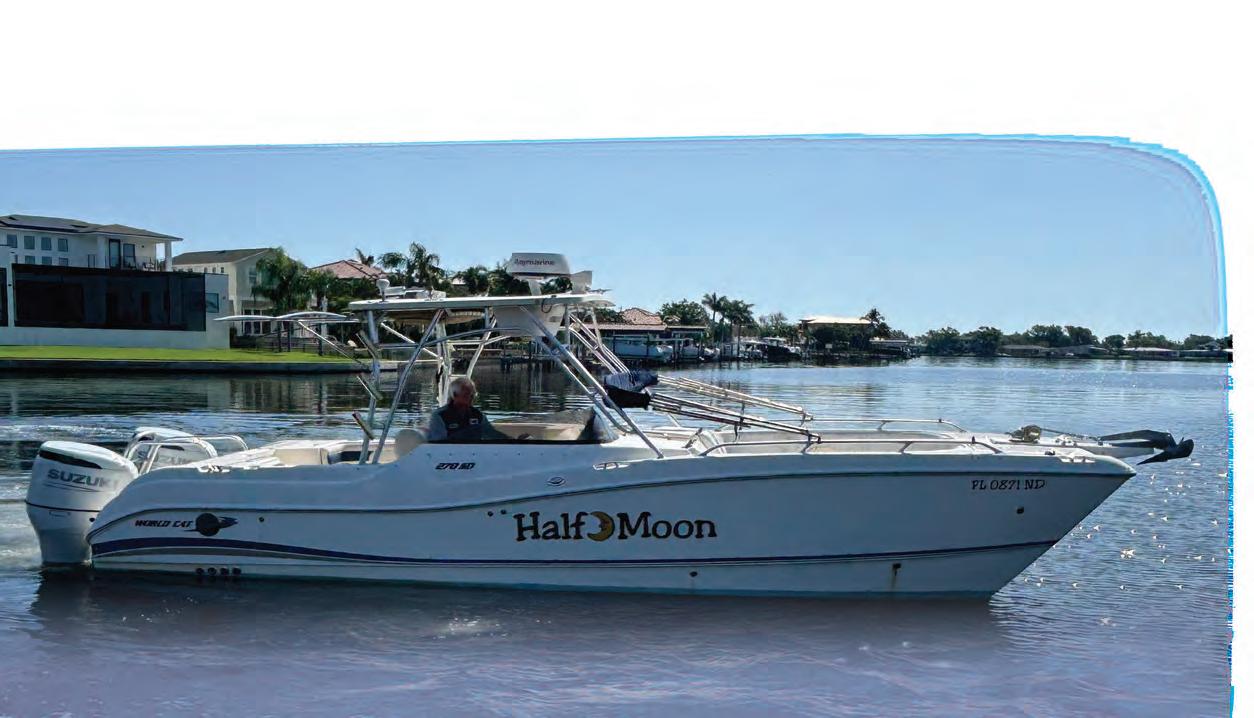
Mastry Engine Center has received the Suzuki Marine Super Service Award and has been ranked #1 in Suzuki Marine US Sales! 60 YEARS OF REPOWER EXPERIENCE!

RePower Packages designed to best ft your needs and not stretch your budget. Financing available.

Rest assured, all Mastry Suzuki RePowers are backed by Suzuki’s industry leading 5-year factory warranty.

Stationed strategically around the East Coast, all Suzuki RePower Centers have achieved the highest level of Suzuki certifcations to meet and exceed your repower needs.
When Considering A Repower, Consider These Factors:
•Every Authorized Mastry Suzuki RePower Center has decades of repower experience providing proper rigging, controls, propeller matching and in water testing
•With a Mastry Suzuki RePower, owners gain improved performance, less noise and greater reliability
•Mastry Suzuki RePower’s exclusive Owner’s Edge Program*
•Mastry Suzuki RePower Centers use authentic Suzuki OEM parts and have factory certifed technicians

Since 2014, Mastry Engine Center, has been building the premiere Suzuki Outboard repower network in Florida. Today, Authorized Mastry Suzuki Outboard Centers have been exceeding expectaions in the Southeast for over two decades. Recently Suzuki Marine requested Mastry Engine Center to expand the network throughout the Northeast. Now boat owners from Maine to Florida can be assured of the best support for their Suzuki outboard repower project. All Authorized Mastry Suzuki RePower Centers provide the best options, information and package pricing for excellent performance in repower.




When you purchase a new Suzuki outboard from an authorized Mastry RePower Center you qualify to become a member of the Mastry Suzuki Owner’s Edge. Owners receive an identifcation card that provides them with important information about their Suzuki outboard motor as well as a passport to additional benefts during ownership. Members enjoy a detailed engine maintenance schedule, Mastry Suzuki RePower Trade Program and special pricing from Mastry Suzuki Partners *Get with the Program!
By Capt. Michael Okruhlik
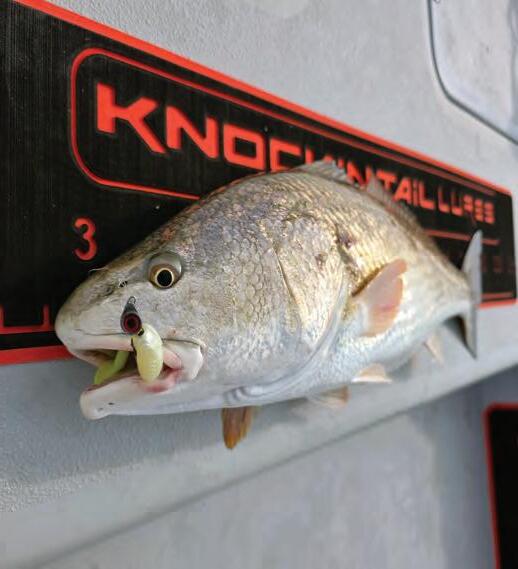
October might just be the perfect month to be on the water. e blazing heat of summer has faded, boat tra c thins, and the marsh comes alive with shrimp, n sh, and the “big three” — trout, red sh, and ounder — all fattening up for the season. For anglers, that means opportunity.
is time of year, I like to keep things simple but intentional. So plastics in the 3.25-inch range are my bread and butter. I lean toward paddle tails because I can cover water quickly and the vibration draws strikes from aggressive fall sh. Durability matters too, because when the action gets fast, the last thing you want is to burn time swapping out torn lures. Rigging depends on cover and depth — sometimes weedless, sometimes a jig head — but either way, adapt to the structure in front of you.
Outgoing tides are my favorite. ey concentrate bait and predators alike into smaller, target-rich areas. Look for drains, bayou mouths, bends, and reef cuts. Even island points can funnel current and stack sh. Once you’ve found the spots, presentation is everything. Reds o en respond to a steady retrieve, trout like a twitch-twitch pause, and ounder react best to a lure darting along the bottom, stirring up a little commotion. Of course, no sh reads the manual — sometimes the “wrong” retrieve produces the right bite. Which brings me to one of the best lessons I’ve learned: sometimes you’ve got to break your own rules. On a recent quarter-moon tide, I worked a shallow grass at with two rods rigged identically except for lure color. One was white with a limetreuse tail, the other pumpkinseed with green glitter. Early on, the reds were all over the pumpkinseed, inhaling it on a fast, steady retrieve just under the surface. But when I noticed trout feeding nearby, I switched things up. Instead of swimming the bait, I bounced it hard o the bottom, fast twitches with short pauses. Suddenly, the trout lit up, and they showed a clear preference for the white limetreuse. at day drove home an important point: don’t get stuck on what’s working. Change the speed, change the color, change the action — sometimes even when the bite is good, it can get better. Covering the same water with di erent retrieves or presentations lets you unlock what di erent species want, even when they’re feeding in the same spot.
So, as October cools the air and the marsh lls with life, keep your tackle simple but your approach exible. Target those pinch points on a falling tide, let the sh tell you what retrieve they want, and don’t be afraid to experiment. e sh are hungry, the weather is kinder, and it’s the perfect time to grab a kid, a paddle tail, and make some memories.
Capt. Michael Okruhlik is the inventor of Knockin Tail Lures®, and the owner of www.MyCoastOutdoors.com.
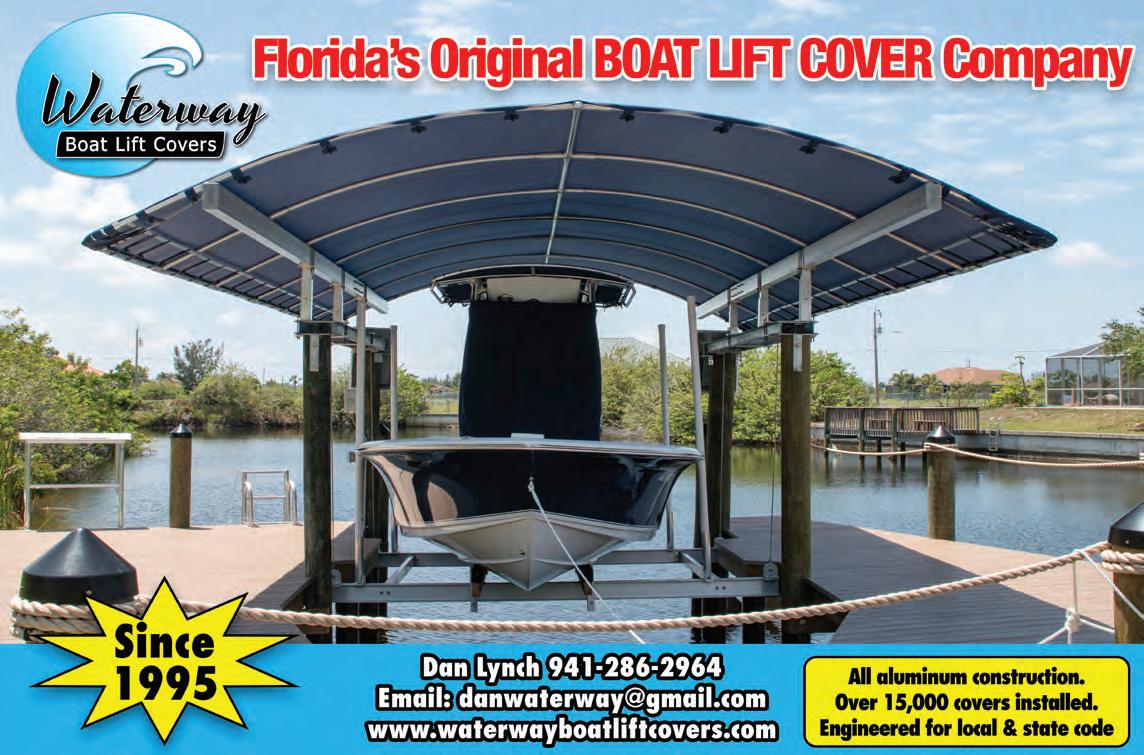
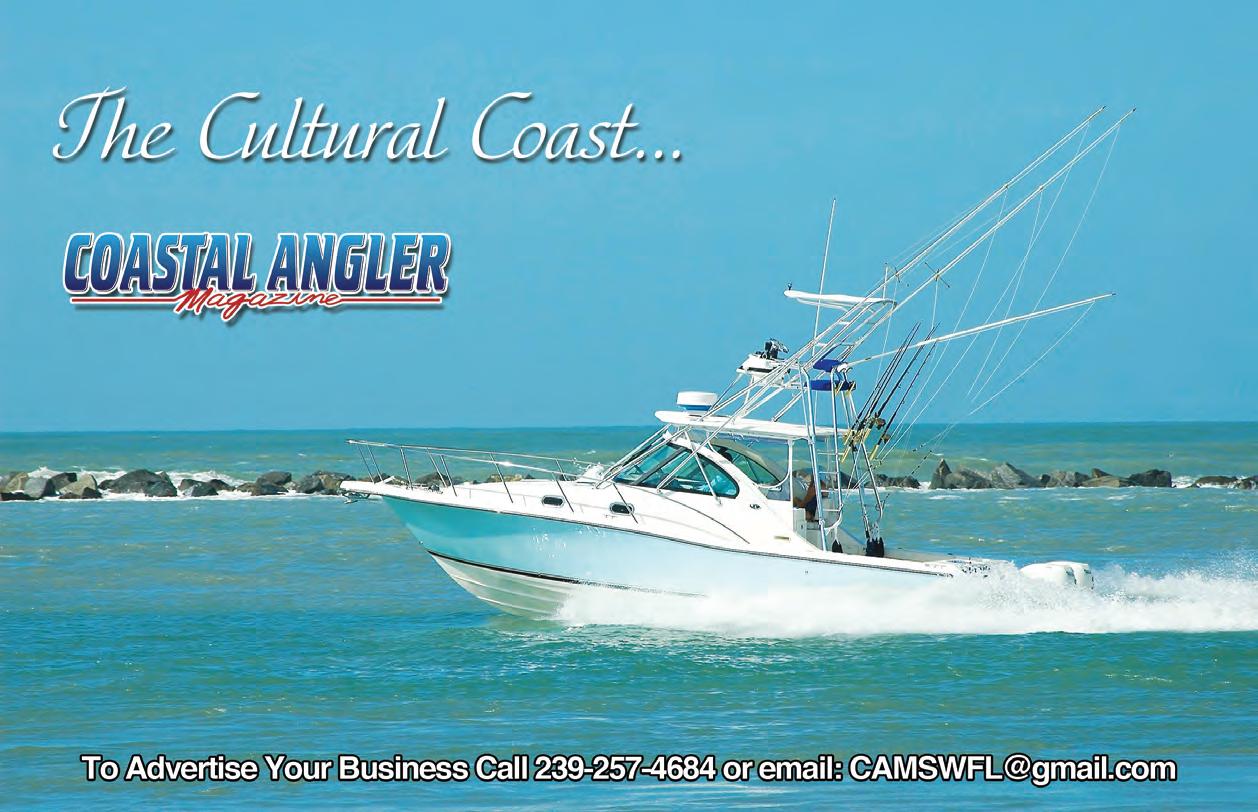
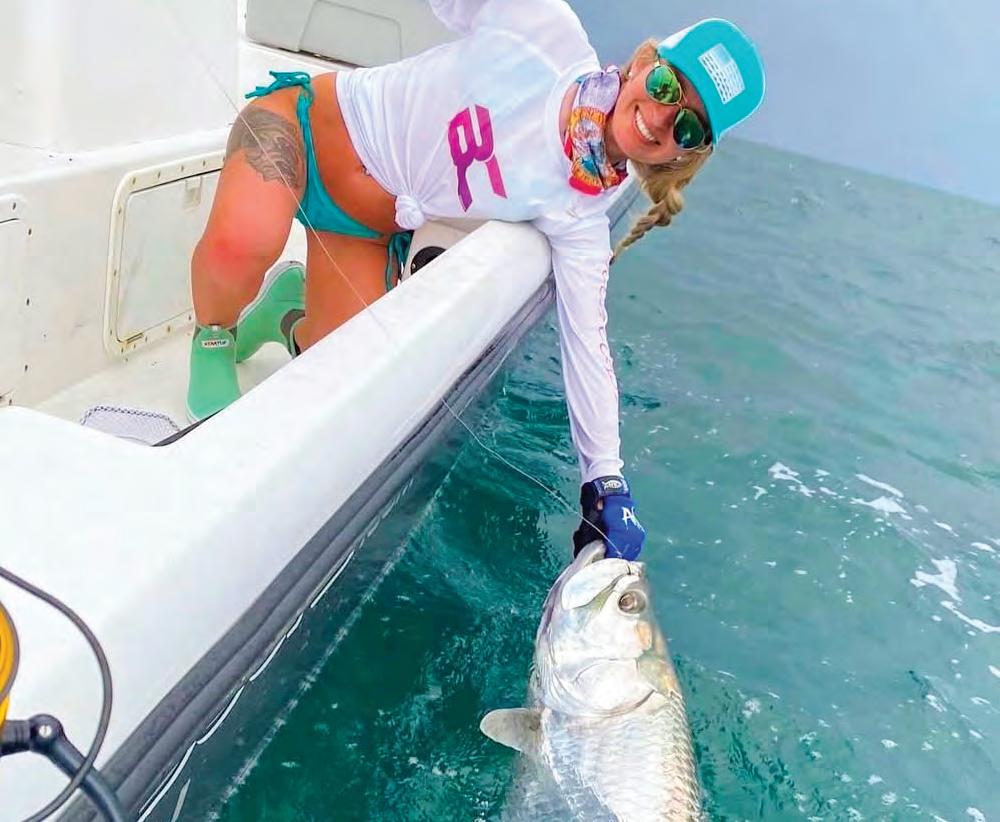
By: Jessica Hendrie
here’s something about a fishing pole in hand that goes far beyond catching a fish. For many of us, the lessons learned on the water seem to creep into every part of life from running a business to navigating marriage. As we know, fishing is the ultimate teacher of patience, business and life. You can have the best bait, sharpest hooks, and still wait hours for a bite. In a world addicted to instant gratification, fishing reminds us that waiting is part of the process. This then takes us to adaptability. No two days fishing are rarely the same… one morning the bite is hot, the next it’s not. Successful anglers read the tide, the current, the wind, and adapt. How many times in your life has flexibility been more valuable than a rigid plan? Just like switching the bait, we have to try different approaches until something works. Another truth of this is that most times, we miss far more fish than we land. But you keep trying anyway because the next one might be the best one. When that best one finally bites, the biggest lesson rises. Appreciation. You have the fish, so now you’re taking in the sunrise, the calm water, the smiles… and the fish you’re about to cook. Those small wins are priceless. It’s all about slowing down, turning into nature, and realizing that success, in fishing and in life, is rarely instant. It’s earned. So, when the line finally gets tight and the reel screams, the reward is that much sweeter because you waited, learned, and didn’t give up. Happy fishing.
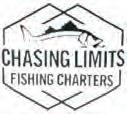
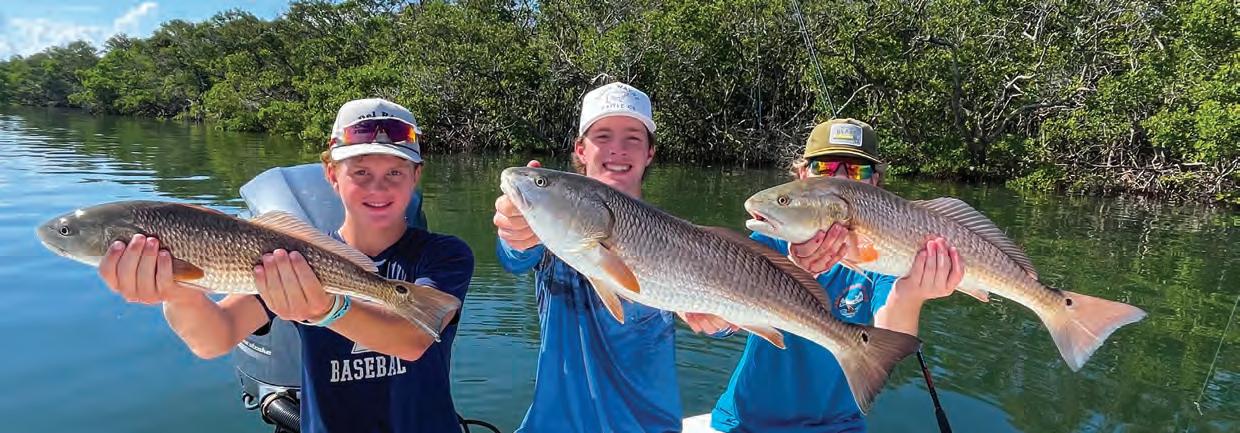
By: Capt. Andrew Bennett
Charter fishing is no doubt hard work, but I am thankful that I get to introduce people to a side of my hometown that they may not otherwise get to see, and often help them experience a day in the outdoors to always remember fondly. I know that I love my job because many times when I get a day with no clients booked for a fishing trip, I still wake up early, go catch bait, and fish alone or with a like minded friend. Recently on one such day, a friend and I used our “day off” to locate a large school of Redfish and experiment with different baits and fishing methods. We found a large school of fish and began catching and releasing the fish using nearly every bait we had available to us. We could not do anything wrong, they ate whatever we threw to them. Finally; as a joke, I put my hook in the plastic bottle cap from my drink and cast into the school, and to my amazement, a redfish ate it and was immediately hooked. After a brief fight I released the fish and had to laugh at the situation. Many times, the difference between success and failure as an angler is some small change in the way that the bait is hooked or the color of a lure or the rate of retrieval of a lure, or for some scenarios the fish demand a certain species of bait to match exactly what they are naturally feeding on. However; it is a welcomed change of pace to see the way that these late summer and early fall redfish, on some days, will eat nearly anything that could possibly be considered prey.
As a professional fisherman, I go to great lengths to know where the fish are and what they are eating at each time of the year. In my experience October is the best month for catching redfish in this area. Redfish enjoy an extremely large range including all of the Gulf states and many of the Atlantic states. Some of them migrate and some stay in the area as permanent residents. They tolerate freshwater well and have been caught in landlocked lakes, but are also caught sometimes offshore. They can be sight casted to as they tail in some shallow back water, or hooked as they migrate through the surf of the Atlantic. No matter where you have fished for them in the past, you owe yourself the chance to experience catching Redfish in the Tampa Bay area this time of year. The fishing pressure is lower than most months of the year, but many of the fish are feeding more than ever getting ready for cooler weather.
Blackened redfish is a delicious meal that is easy and quick to prepare, and because redfish can not be harvested commercially in Florida, catching them yourself is the most likely way that you will be able to experience this dish. Give me a call if you would like my help chasing your limit of October redfish.



By: Caitlyn Gatrell
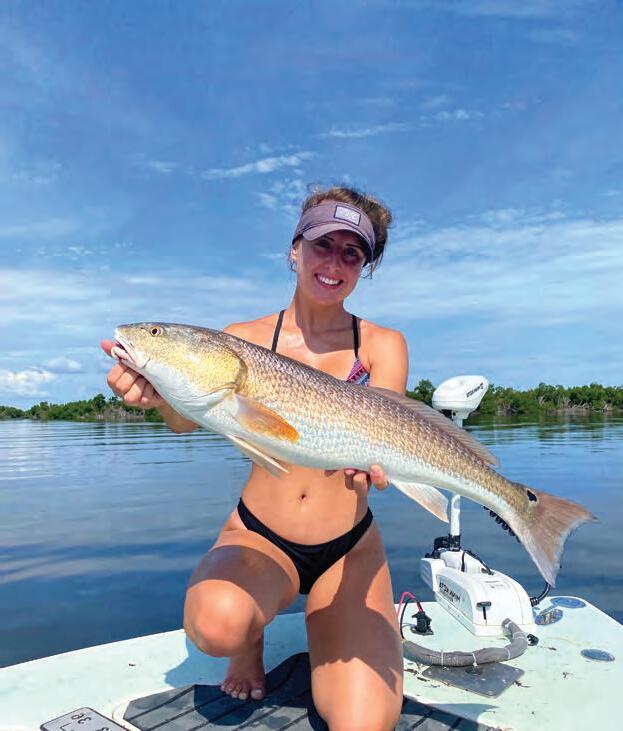
When fall rolls into Southwest Florida, the area come alive as anglers hunt the water and bait & fish are active. The temperatures begin to drop and the tides and bait movement kick off some of the best fishing of the year. Florida does have good year-round fishing, but fall brings out some of the trophy catches such as bull redfish, big snook,
and more. Just keep in mind that in the mangrove mazes, the cooler season means hungry, breeding and migrating fish and bait are out and about.
From the mangrove lines to the shallow water of local islands and their points, and even in the backcountry, schools of baitfish, especially mullet who are on their annual migration run around this time, start becoming more and more abundant. They are easily found and can be caught with a cast net.
When you secure your bait and head to your spots, get ready for a potential gnarly fight. Not only are there sharks around, but snook and redfish become more aggressive, jacks strike hard on bait balls, and trout are around and willing to bite. The fall season also includes a taste of tarpon fishing as you watch them chase the mullet run as it pushes south.
We spend most of our fall trips targeting the mangroves and nearby structure such as docks, drop offs, piers, cuts, oyster beds, points, etc., wherever the current pushes bait through. These ambush spots are great for snook and reds, which are feeding heavily before winter slows them down. Redfish patrol the shallows, tailing on oyster beds and shorelines, and when you hook into one, they’ll run with power. The same goes for snook, often hiding in between mangroves branches and nearby the underwater cuts.
Live bait is a go-to this time of year, but top waters and soft plastics can get explosive strikes on crisp mornings when the water temps are just right. A couple key factors that help us succeed are casting tight against the mangroves, slowly trolling along oyster beds and flats, and free lining baits into the deeper cuts and currents.
Fall fishing isn’t just about what you catch, it’s also about how it feels. The temperatures and atmosphere are cooler and in my opinion quieter, the water is alive with movement, and every strike feels like part of the season’s rhythm. Whether it’s a snook slamming your line under a mangrove, a redfish tailing at dawn, or a jack, or even a tarpon, giving you a run for your money in open water, fall in Southwest Florida is great fishing, and great memories!

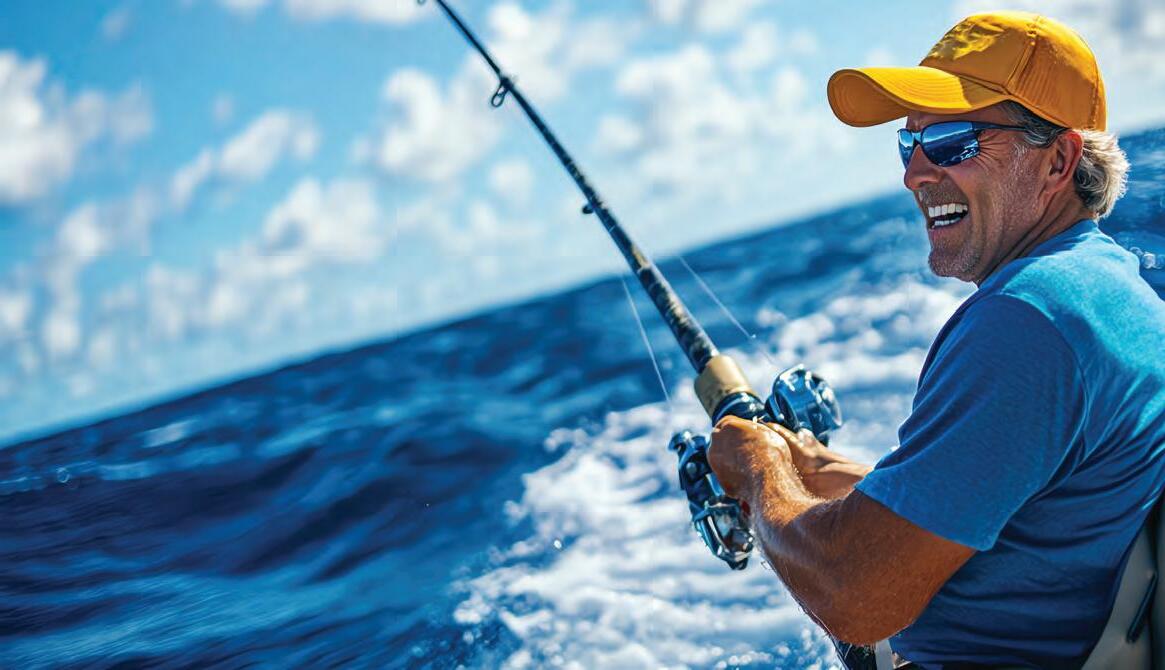








By: Joe Sheaffer

What areas do you like to fish? I get that question fairly often from friends and other anglers. Many times, I have a plan for my fishing days but there are times when I’m fishing a new area or I haven’t fished for a while. During those situations I do have a plan. The old phrase never pass up a point comes to mind. Points are great places to start. In saying that, not all points are the same, figuring out what points might be more productive than others can be a key to a great day. I like points that have good current flow. Many fish are looking for current breaks and points definitely change current flow. Tide typically will be the main catalyst for current but wind can push water creating water flow. Finding points that have deeper water or are close to deeper water can be very good, especially if the deeper side of the point
is down current. Fish will set up in those deeper sections waiting for the current to bring them an easy meal. Points next to funnel areas, such as those stretches between islands or hard structures can be very good. There usually will be very good current flow around these points. Points that have bait on or near them can be very good. Again, the fish like current breaks and the fact there is a noticeable food source on or near the point should get our full attention. One last key, if a point has 2 or 3 of these things going on at one time that should almost be automatic for fish activity. Once you figure out the points fish seem to be relating to, that can help you develop a pattern for the day or at least a place to start. When in doubt, start with points and the areas around those current breaks. Good luck and keep casting!






Cortez, FL - Oct 2025
1
2
3
6
7
22



































































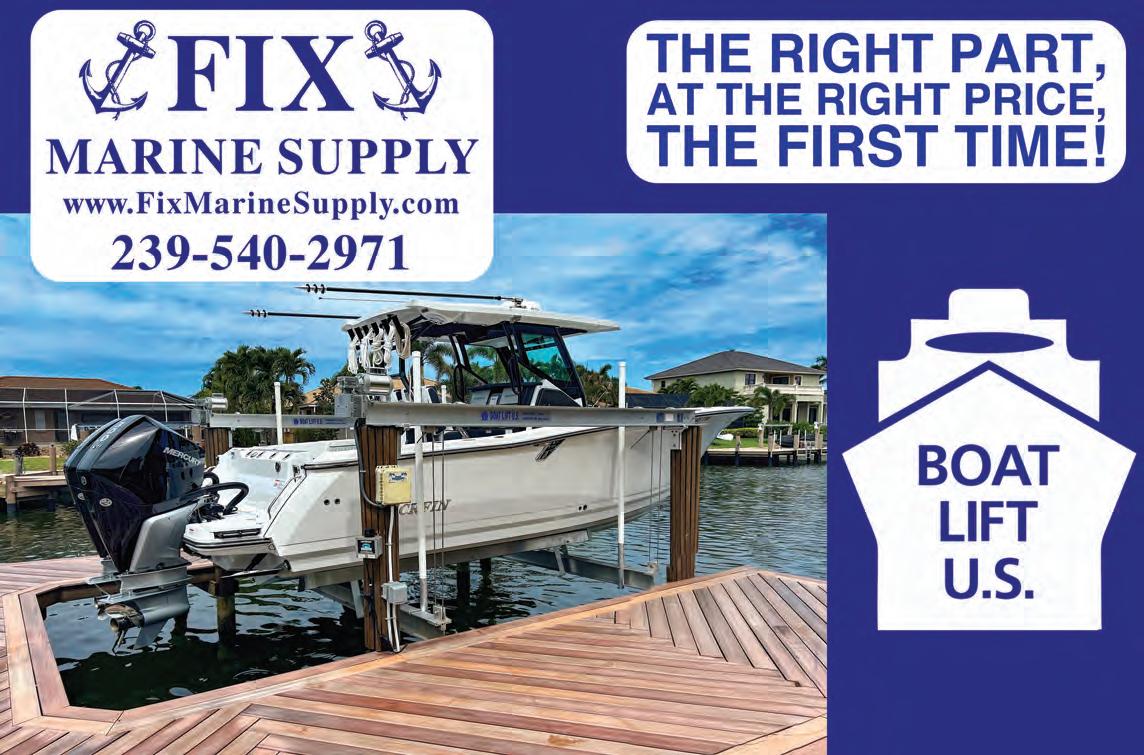
6


Sarasota, FL - Oct 2025






















































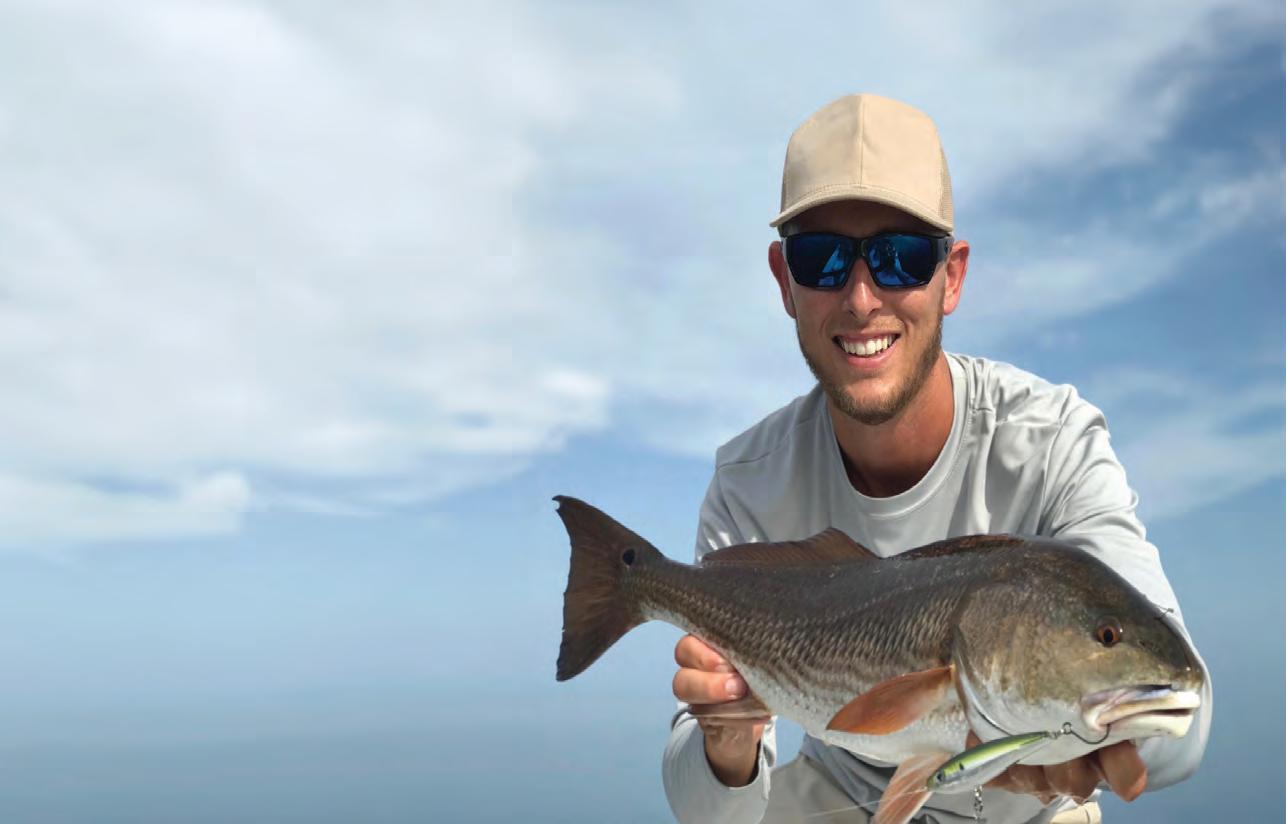

By: Capt. Tim Ramsey

Two months ago, after having stored the boat for a few months, I hopped aboard and started prepping for fishing the next day. I opened the console hatch and noticed it looked unusually dirty with some yellowish stains and an odd aroma. No worries, I immediately cleaned it out and put my safety gear back inside. That’s when I noticed the fabric cover of my first aid kit looked strangely worn on the edges.
After that, I went to the stern and lifted the hatch under the starboard stern seat. My overly expensive blue polymer dock line looked like something had chewed on it. Weird. Then I went to the port side, opened the hatch under that stern seat, and something startled me. Next to a sizeable ball of frayed multicolor fibers, a pair of bright blue eyes stared back at me. It took me a few seconds to compute what I was seeing, then I spontaneously blurted “Mickey!” I had an uninvited guest. A mouse. Cute, but unwanted.
Before I was able to grab it or block it’s egress out of the well under the seat, it slipped through the finger hole that lets you lift the plastic bucket out of the well and disappeared. Ironically, I blurted “rats!” Silly me. I lifted the clump of fibers out of the well and something dropped on the deck. It was a baby mouse, so young its eyes were still closed. Then another. Did I have an entire mouse family in my boat? Was this a rodent nursery? How did the darn thing get in the boat? You might be thinking I stomped on the babies, but I got out of the boat and set them just inside the edge of the woods next to where the boat sat on the trailer. After all, since I’m Army retired, killing is no longer my business.
Thi s is where I started wondering how to get rid of a rodent infestation in a boat. I inspected all the places a mouse might hide, realizing there were far more places between the hull and inner liner that a pest could live. Oh, what to do?
Fi rst, I considered giving the boat a good wash with lots of Spray 9 and boat soap in all the nooks and crannies, including inside the hull. I also removed the dock lines the mouse had chewed. Irritatingly, it preferred the expensive blue polymer ones over the plain white ones. I fished the next day and returned to the boat about three days later. Again, under the console, the same yellow stuff I identified as mouse urine, and some droppings. Now I knew the fraying on my first aid kit was from being chewed. Looking in the stern hatch, I noticed the plain white dock line showed some chew marks.
Ti me to up my game. I went to the garden center and bought some
“balsam oil sachet’s” said to repel rodents, and some peppermint oil claimed to do the same. Long story short, they don’t work. Sure, they smell great, but one sachet set under the console was being chewed on and the peppermint oil maintained its smell better in the side door storage in the back of my truck than anywhere on or in the boat. Time to go old school.
There’s an odd feeling that comes over you when you realize you’re at the hardware store buying mousetraps for your boat. I’ve always been fastidious to the point of obsessive over the cleanliness of the boat, and I had an infestation. Did it come in through the open plug? Climb up the engine and hop in? Go down the rod holder? Squeeze through the small drain hole under the stern seat? I don’t know. This was the plan; one trap in each stern seat well, one under the console, and one in the bilge. Peanut butter, not cheese. Fast forward, two days later I lifted the hatch under the port stern seat where I originally saw Mickey and boom, got him. Or her, I don’t know. It had unusually long hind legs which the internet said let the creature jump up to three feet off the ground. Weird.
Ju st in case, I put more peanut butter on the trap and put it back in the well. Two days later, I came back. I checked the two wells and the trap under the console. Nothing. Then I knelt on my Skeeter’s “nonskid from hell” covered stern deck and removed the small hatch in the engine well. There, in the bilge, was another victim. This time, when handling the trap, it didn’t snap down twice on the spot on my hand between my thumb and index finger like it did when I tried to reach down and set it gently in the bilge, and I removed my second casualty. This mouse didn’t have long hind legs like the first. Did I have more?
Over the last two months, I haven’t seen any signs of unwanted guests. Then, last week, I opened the starboard bow hatch to discover a host of mouse droppings like Mickey was having a family reunion on my boat. I set a trap in there and waited two days. When I returned, I found the trap was tripped and had absolutely no signs of ever being baited by peanut butter. Here I go again. I think they’re in the space behind the holes for rod butts in the starboard locker.
I guess the moral of the story is getting rid of unwanted guests is always a tricky proposition, and once they’re gone, not only do you stand the chance of their return, but you never really know if they were gone at all.


By: Capt. Dave Stephens
The fishery in Southwest Florida is known for its red fish, and this year is looking to be one that will not disappoint. Over the past couple of weeks, the red fish fishery has been very good. We have been doing very well on the higher tides, fishing points with good tidal flow. It does not matter on tide direction as much as height. If the water is up the fish are hungry and as the water gets lower the bars or potholes have been producing really well, especially the bars with oyster humps or deep cuts in them. Also, on the lower water reds will follow schools of mullet. While mullet are vegetarians, they stir up the bottom and forage that reds feed on. Live baits such as pilchards and pin fish have been the
baits of choice. If you like to toss around some artificials? Baits such as gold spoons are hard to beat, also soft plastics are a good go-to. Another option is cut bait such as lady fish and mullet. We have still been having good success at putting some really nice tarpon to the boat. Most of these fish have been hanging outside of large schools of herring, or lady fish schools. Getting an early start will help to locate rolling fish in the calm waters. This is a hard time of year to beat, so get out there and see what awaits.






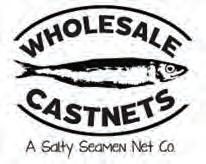


By: Capt. Bart Marx
As the days begin to get shorter and nights get longer, this is the time of year fish will start changing their patterns. This time of year, we call Southwest Florida “Red October”, which is when the big schools of breeder redfish come in to the estuaries to feed and prepare to go offshore to spawn. This is also the time of year, there are lots of pinfish on the grass flats and redfish love their pinfish. Reds have a crusher in their throat and can crush the pinfish spines for easy eating. I usually catch them on a fly rod with a spinning rod with live bait. They are not too fussy as to what they will eat, even artificial lures hard and soft. Snook will also be getting back to their normal life and feeding after the spawn and will be only getting better as we get closer to winter. Trout will be hanging around the edges of the sandbars in three to four foot of water and as the water cools flounder will start to school up on some of the sand holes where there are current pushing baits across the sand so they may ambush the baits. Looking at the deeper waters off the beaches you may find some of the schools of reds out there too. I like to troll for grouper and this is the beginning of the time when they migrate closer to the beach. I like to use the big lipped

lures that will dive thirty to forty feet deep and I’ll troll for grouper around hard bottom and small ledges and the edges of the artificial reefs. Red and gag grouper will hit these lures 50 to 70-foot range for trolling. If we get a few cold fronts, it will trigger the king mackerel to start migrating south for the winter, and don’t be surprised if you see spanish mackerel in the mix. If you fish in 60 to 70 feet you can find some lane and mangrove snappers, and out to 80 feet there should be yellow tail snapper. And this month is when stone crab season opens, if you like to dive for them! If you would like to come along with Capt. Bart and experience how we fish for some of these species give me a call at 941-979-6517 or e-mail me at captbart@alphaomegacharters. com Also, if you have guests coming to visit I have gift certificates for birthdays and holiday gifts. I also do training sessions, this where I come on your boat and teach you where you can take your boat safely and how to use the tackle that you already have.

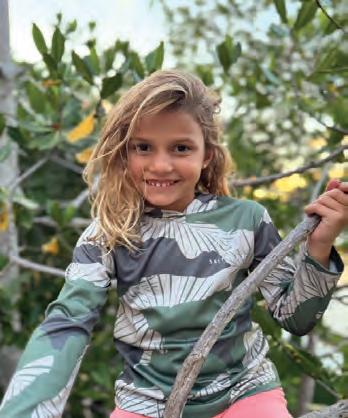




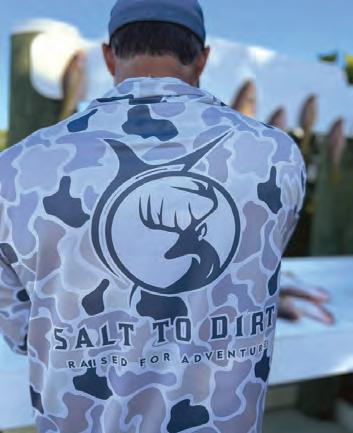






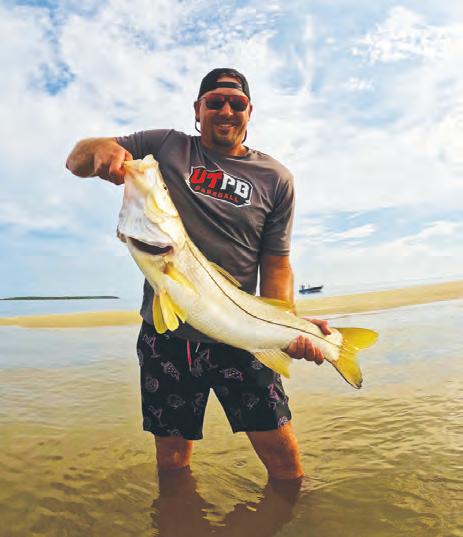


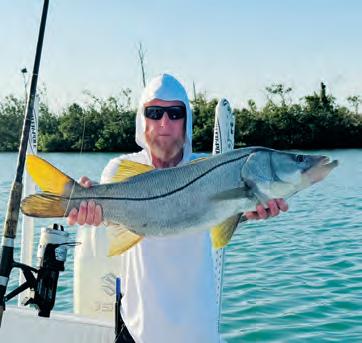
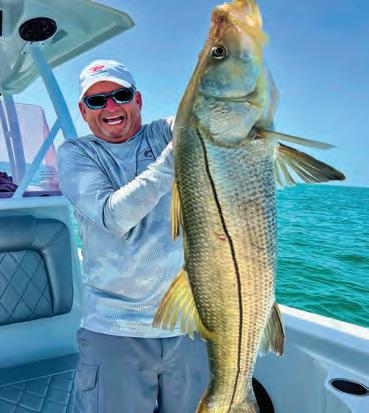
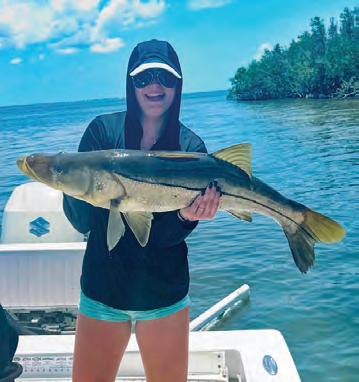




Coastal Angler recently had the opportunity to speak with Evan alas, CEO of alas Apps, to discuss Marispeak (short for Maritime Speak) to see what all the chatter and excitement was about regarding the new Marispeak navigational app. Four years into the making, this new app instantly turns your phone into a maritime communication and information center, allowing clear and secure messaging, maps, water depths, weather information and more. It also enables a push to talk “Walkie Talkie” feature, and audio/video calls for quick communication with anyone using the Marispeak App, once they have been added to your private group, or with any user in the help group.
Some key features of the Marispeak App.
• Nautical Maps Overlay - Displays shipping channels, buoys and channel markers
• Realtime AIS Data - Displays vessels on a map in realtime.
• Plotter - Displays your boat’s current position in real time, allowing recording and retrieval.
• Water Depths
• Speed Indicator
• AI-Arti cial Intelligence Module - Allows you to verbally ask boating, shing and marine life related questions, and receive spoken answers from MariSpeak AI.
• Help Feature - Communicate with other Marispeak users and request assistance
• Real Time Tracker Device - Tracks your boat if it has been stolen.

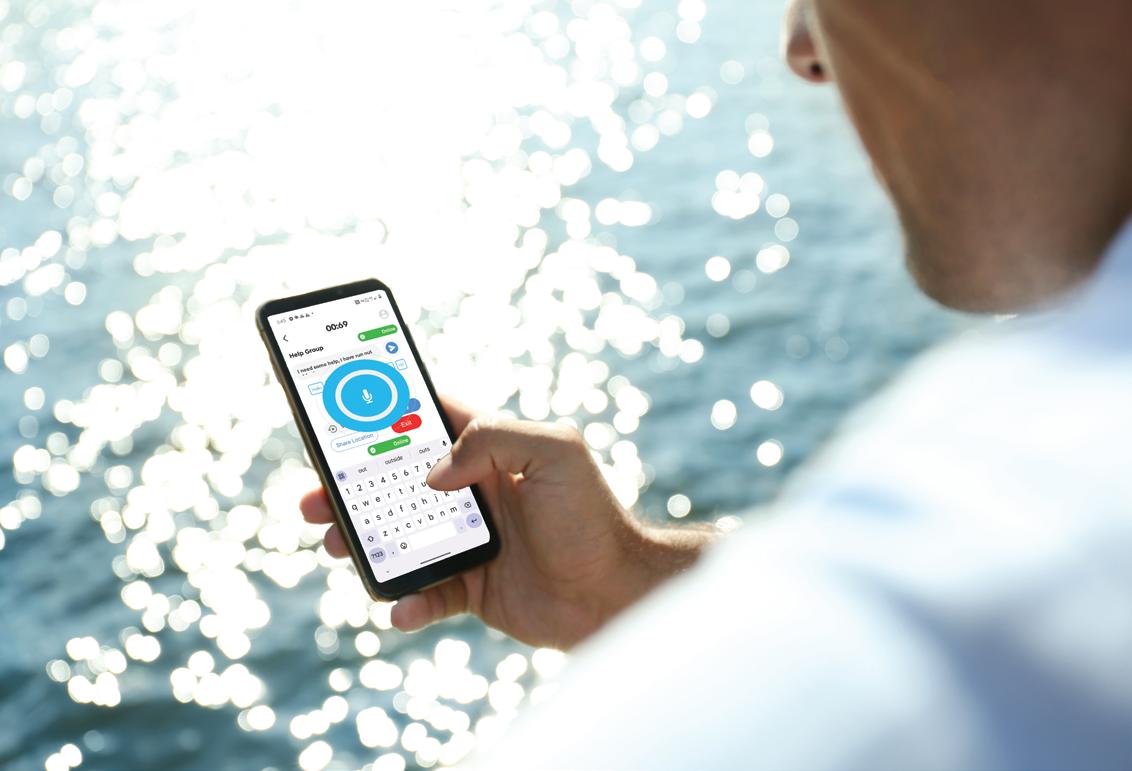
According to Evan, his previous positions as National Business Development Manager for Uniden Australia, and Account Manager for ICOM Australia, enabled him to understand the need for an economical and easy to use navigational and communication device for the marine industry. Evan received assistance for the UI (User Interface) design from Nikolaus Hema, a Graduate of Distinction from Swinburne University in Australia with a master’s degree in design digital research, specialising in research in arti cial intelligence. Evan set out to revolutionize the boating/navigational industry, by utilizing high tech functionality with low tech use applications. is was no easy task. Developing this app for a global audience required years of painstaking e ort from the team.
Now fully tested and available through the APP Stores, this app is a “must have” for all boaters of any size vessel including kayaks and canoes.
Coastal Angler Magazine salutes Marispeak for their monumental accomplishment which we believe is destined to change the boating industry.

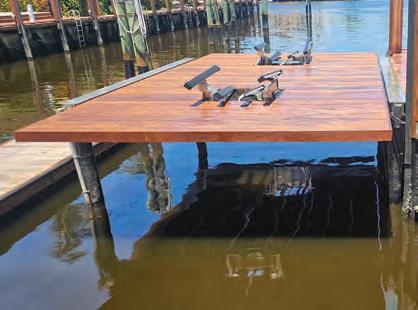
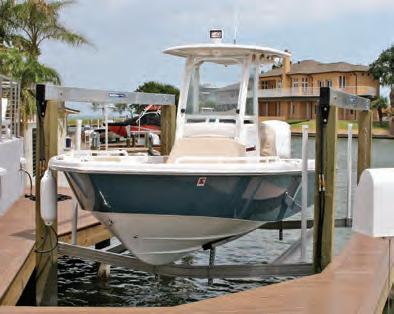


ShoreStation hydraulic boat lifts are a reliable choice for coastal residents and boating enthusiasts alike. Their strong construction, made with corrosion-resistant materials, allows them to withstand harsh environmental conditions, including sun, storms, and saltwater damage. ShoreStation provides a steadfast solution for protecting waterfront investments, o ering peace of mind to owners in the Sunshine State.
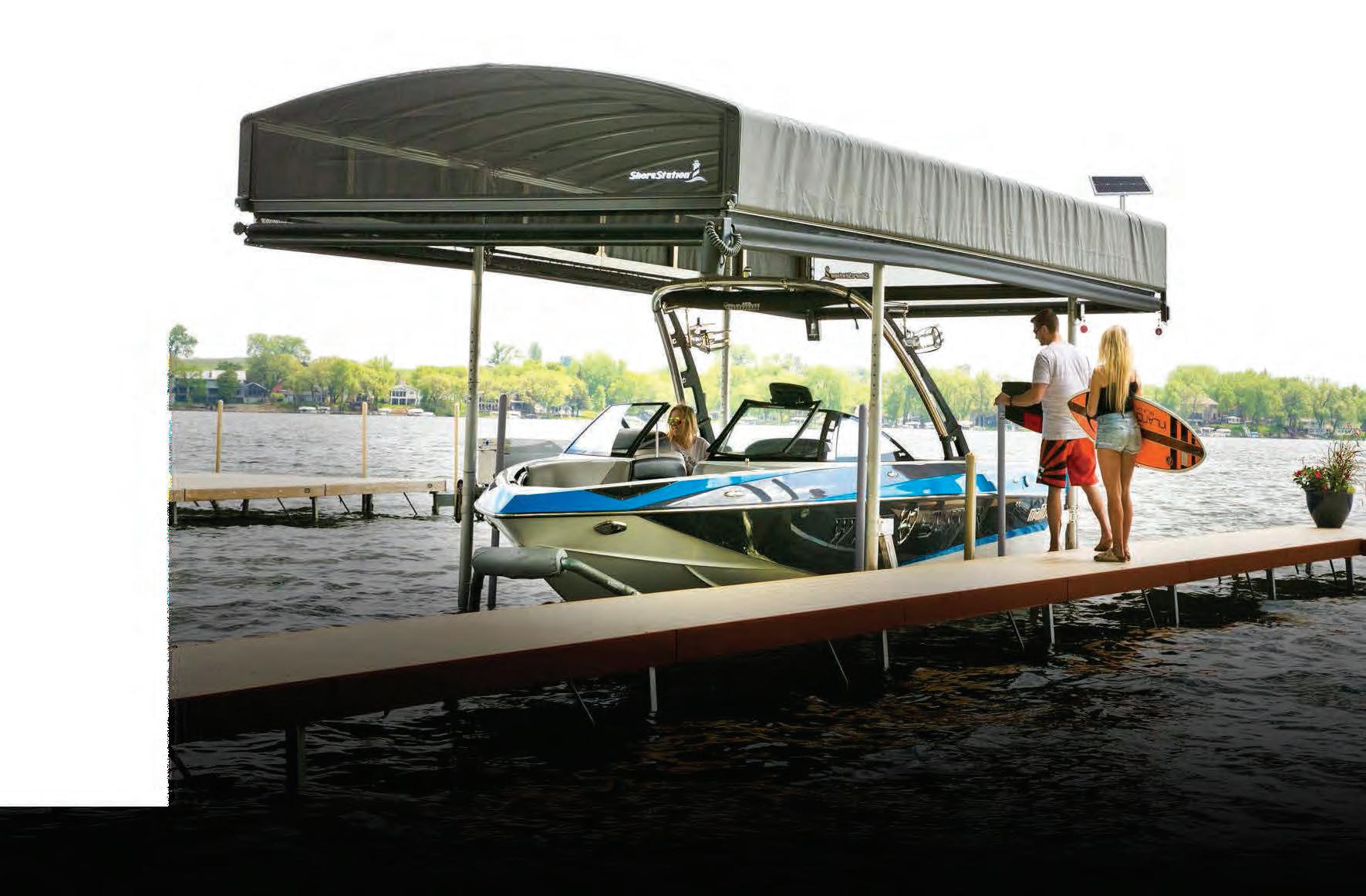




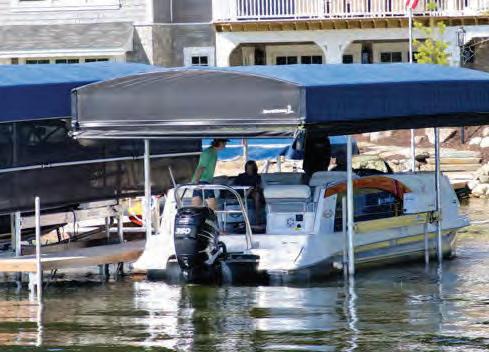

Equipped with exceptional weather resistant fabric and breathable SunTex 80 woven mesh ends for maximum protection and durability,

Made from the highest quality materials, our innovative hydraulic boat lift is one of the fastest and safest lifts on the market today. When you have a hydraulic lift, there’s no need to worry about wind and waves getting in your way. This lift will give you con dence to safely land and secure your boat in less-than-ideal conditions.
Never miss another moment on the water. Power your lift with clean, free solar power. Our speedy 20 watt charger features solar regulator drainage protection, saving your battery from permanent damage caused by overcharging.




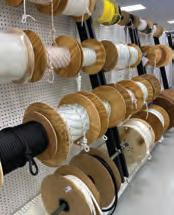
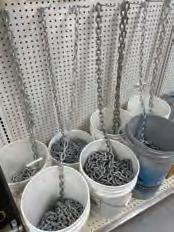
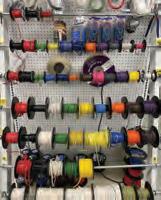








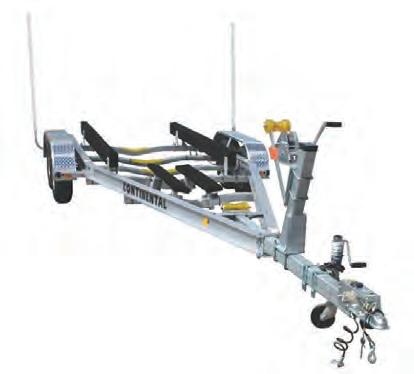











October has traditionally been one of my favorite months of the year for a number of species, but especially for grouper. I’ve always said that Christmas week is the apex of grouper fishing…and it is. I’ve also said that there is a mental hierarchy in grouper, with gags being at the top and reds being at the bottom. I could catch a red grouper on a wooden dowel rod with menhaden oil on it and a hook attached…and that is not an exaggeration.
I hate to be repetitive, but a live pinfish on a Squid Decoy Jig is a dead ringer for red grouper (and all grouper for that matter). If you have the ability to keep a pinfish trap in the water, I would strongly suggest securing several dozen pinfish to take bottom fishing. Everything out there eats them, not to mention they are very hardy and will live all day in the livewell. Red grouper, gags and scamps all view pinfish the same as sailor’s choice and other small snappers as egg eaters. If for no other reason, they will eat them just to kill them, so they don’t eat their eggs. Frozen cigar minnows and sardines have caught more grouper (historically) than all the other baits combined. That’s what they eat!
Tim Barefoot
ice, fuel or weather.

We always had hundreds of pounds of (frozen) cigs and sardines, so let’s not get too carried away with the bait selection. Frozen cigs get the job done, but now that I’m fishing the super stealth decoy
10 seconds. Nothing down there can resist it. Period.
As I always say, “Find the bait, find the fish.” Yes, I like to fish structure like ledges, wrecks or live bottom, but the main ingredient is food. If you mark big stacks of cigar minnows, sardines, beeliners, etc., it’s always a good idea to fish below that, and keep the light line out on the surface or near the surface for all the pelagics. We have vast areas of sand bottom with no structure whatsoever. We just fished big stacks of bait and caught them GOOD! Red grouper can be caught in most depths of water. From as shallow as 15 feet on the Atlantic side to 400 feet and beyond. The only problem with fishing this style of jig and minnow combination is that you are definitely gonna catch gags, scamps, blacks— and those “endangered” American red snapper.

jig/bait combination, I do love a live pinfish or other live baits.
Please take a descending device and familiarize yourself with how to use it.
I guess that’s why I’m writing this article featuring red grouper this month; because that’s about all we have to fish for this time of year. So get out there with some pinfish and frozen minnows and harvest the red grouper and scamps.
On a commercial fishing trip (many years ago), if you ran out of any one of these four things, it would send you back to the Hill: bait,
With that all being said, don’t ever pass up the opportunity to jig up live cigs and sardines for the ULTIMATE combo! The life expectancy of a live cig or sardine on a Decoy Jig is under
Take your kids fishing, too, and make plenty of videos and photos that’ll last a lifetime.
Learn more from Tim Barefoot on his YouTube channel and at barefootcatsandtackle.com.
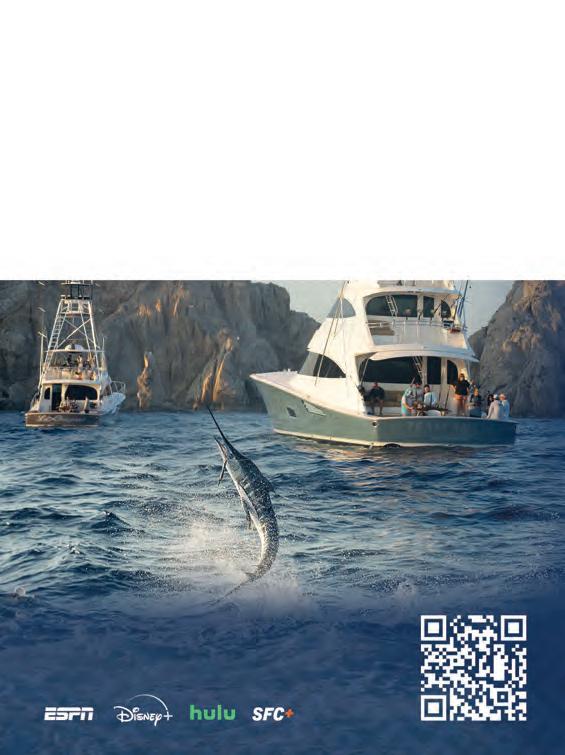
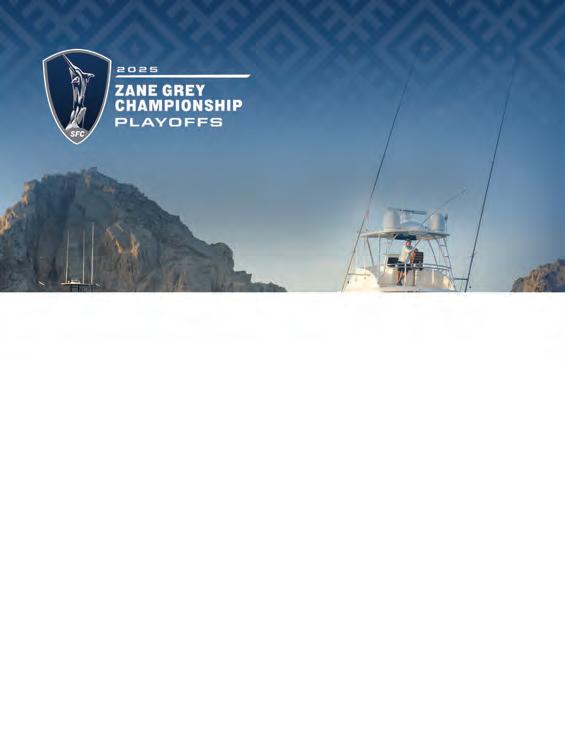

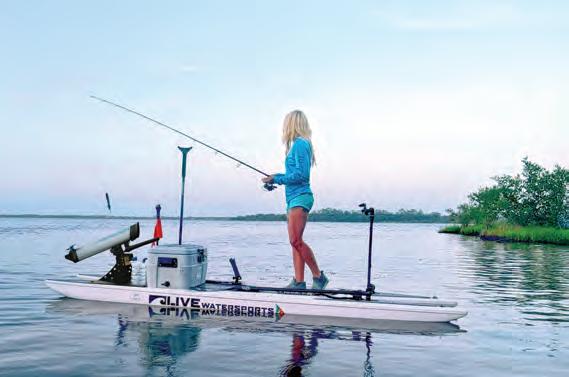

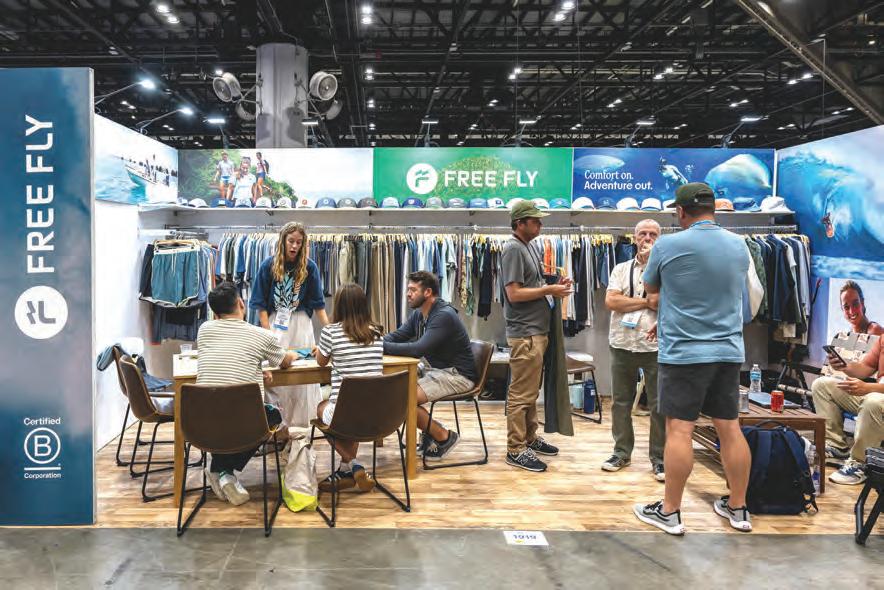
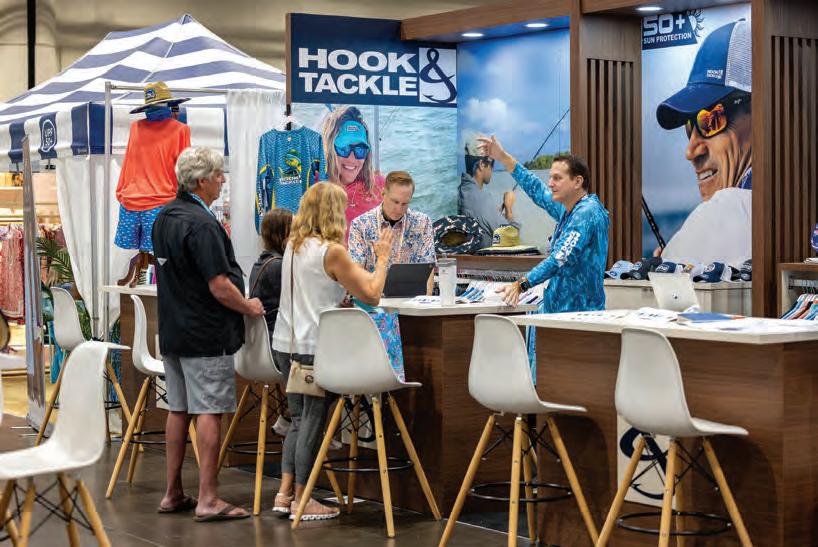
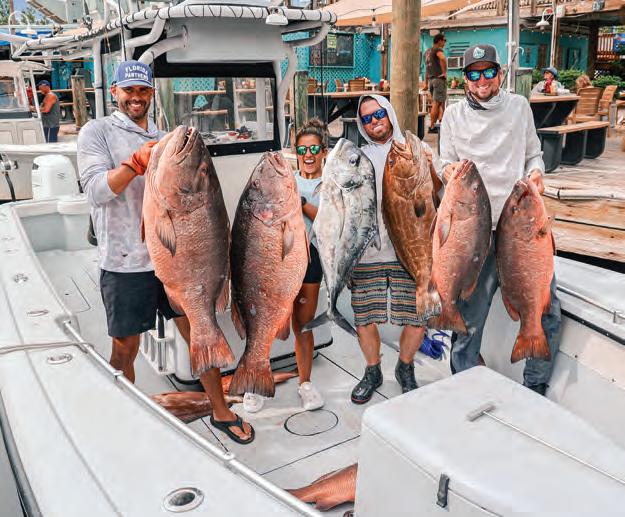
By Astrid deGruchy
When it comes to snapper fishing, the Florida Keys are hard to beat. From shallow mangroves to deep wrecks, these waters hold everything from tasty keepers to tackle-busting giants, and the right gear makes all the difference.
shrimp, pilchards, or cut ballyhoo for consistent action. Downsizing leader in clear water is key. On the reef edge, Yellowtail snapper are Keys gold. Target them from spring through fall using a PENN Slammer IV 4500 with 15 lb mono. Set a steady chum slick and free-line white baits like pilchards on a Mustad 1/0 J-hook. Keep your presentation natural since yellowtails spook easily.
For heavier hitters, Mutton snapper shine during the late spring and early summer full moons. Use a PENN Authority 5500 matched with 30 lb mono leaders and Mustad 3/0 to 4/0 circle hooks (Big Guns are the best). Drift live pinfish or pilchards back naturally, and be ready, when a mutton eats, it’s all power. For something more regal, head deep for queen snapper, the true royalty of the snapper world. These stunning red fish haunt 500-1,000 feet down along the continental shelf. A PENN Fathom II paired with 40 lb braid and a Mustad 6/0 circle hook tipped with squid or bonita chunks gets it done. Most anglers opt for electric reels, but handcranking one up is a badge of honor.
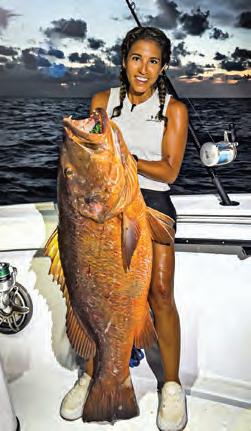
Mangrove snappers are the everyday staple, found year-round around bridges, mangroves, and patch reefs. Light tackle with a PENN Spinfisher VI or Battle III 3500 with 20-25 lb mono gets the job done. Use live


Then there’s the ultimate test: the Cubera snapper. Capt. Kody (@capt_kody) recently put me on a 65-pound Cubera out of Key West. These brutes demand muscle, like PENN International 50VISX, 80-100 lb mono + Mustad 12/0 circle hook type muscle. Summer full moons are prime, and whole lobsters are the bait of choice (yes, not cheap). Once you’re hooked up, it’s a brutal test of endurance, arguably the hardest fight you’ll experience on stand-up gear, especially when you’re handcranking every inch.
Out here, every snapper tells a story… from the quick hits of mangroves to the heartpounding brawls with cubera beasts. We live for those moments, and now you can too. Follow the journey on Bean Sportfishing TV on YouTube. If you are interested in a Cubera Trip, reach out to Capt. Kody Michael on Instagram (@capt_kody) or go to reel-guides.com
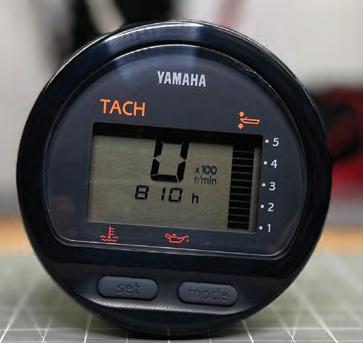

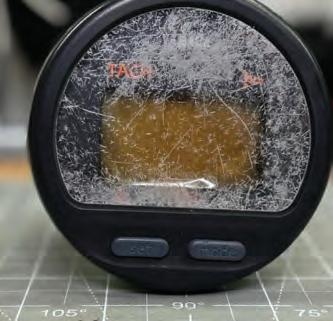



It’s no fish tale when you run with a John Deere. You can get everything done faster and easier, so you get more time on the water. Plus, our special offers make them the catch of the day.



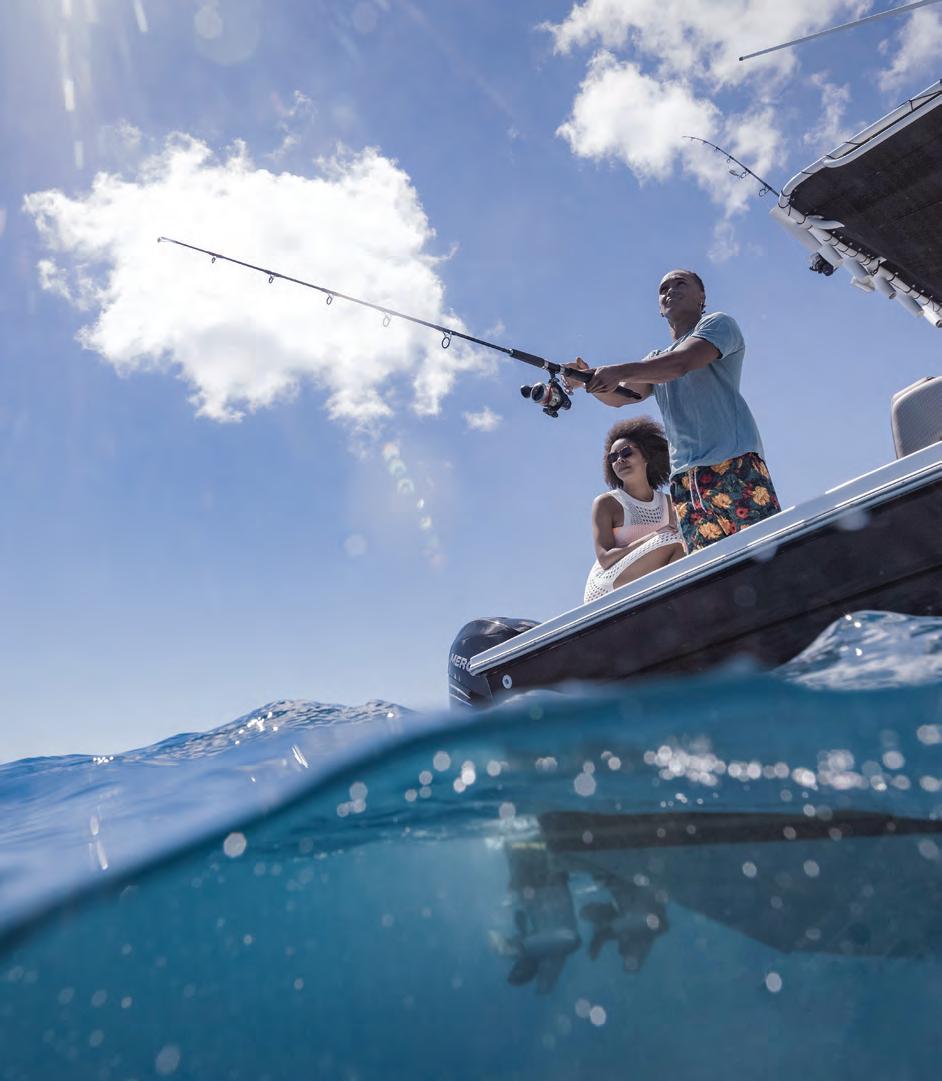
Nestled in the heart of the Caribbean, the US Virgin Islands embody a harmonious blend of natural beauty, cultural vibrancy, and laid-back serenity. These islands are more than just a picturesque getaway; they are a living testament to nature’s rhythm and resilience, effortlessly in tune with the world around them.
With no passport required for U.S. citizens, from the moment you arrive, the islands’ natural rhythm is palpable. The gentle sway of palm trees, the soothing sound of surf crashing against sandy shores, and the vibrant melodies of local music all echo the heartbeat of this tropical paradise. The islands’ lush landscapes, with their verdant hills and crystal-clear waters, mirror the steady pulse of life that sustains the local ecosystems and communities alike.
The US Virgin Islands’ environment is a symphony of biodiversity with world class fishing and diving. These natural elements are not static; they dance in harmony, influenced by the tides, wind, and seasonal changes—further emphasizing the islands’ intrinsic rhythm. This delicate balance underscores the importance of conservation efforts, ensuring that future generations continue to experience the islands’ natural cadence.
Culturally, the US Virgin Islands are equally in tune. The music, dance and festivals reflect a vibrant heritage rooted in African, European and Caribbean traditions. The spirited calypso beats
and reggae rhythms are expressions of life's ongoing dance—celebrating resilience, community and joy. These cultural expressions are an extension of the islands’ natural rhythm, showcasing how human life here moves seamlessly with nature’s flow.

In a world often dictated by chaos and rapid change, the US Virgin Islands serve as a reminder of the beauty of being in sync with nature’s tempo. Their natural, cultural and ecological rhythms offer







a blueprint for sustainable living and harmony. As travelers and residents alike continue to embrace this rhythm, they uphold a legacy of balance—one that celebrates life’s natural flow and the enduring spirit of these remarkable islands. In the US Virgin Islands, being in rhythm
way of life.
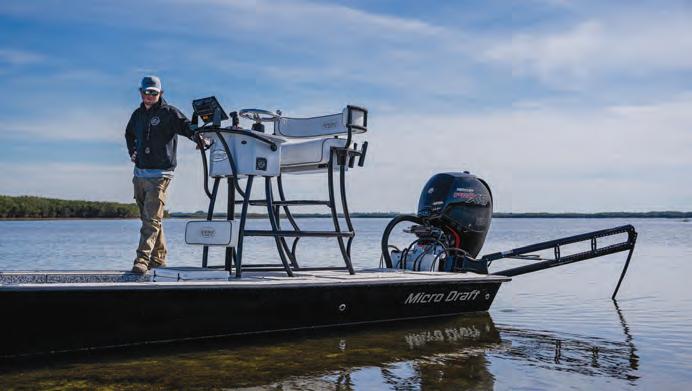




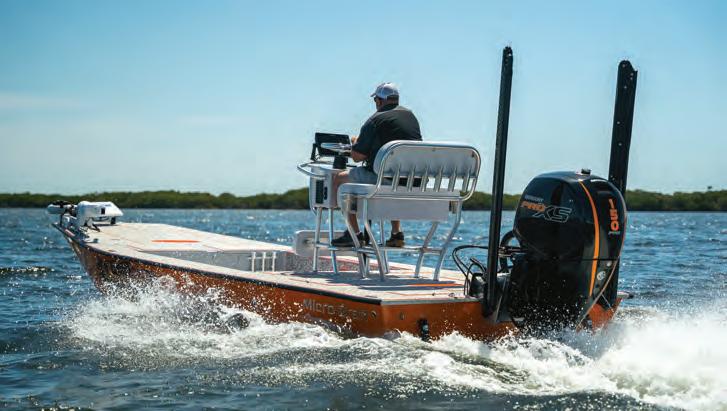

The North Carolina Wildlife Resources Commission (NCWRC) will implement Delayed Harvest Trout Waters regulations on 33 trout waters beginning Oct. 1. Under Delayed Harvest Trout Waters regulations, only catch-and-release of trout is permissible from program waters between Oct. 1 and June 5, 2026. No natural bait may be possessed, and anglers can fish only with artificial lures with one single hook. An artificial lure is defined as a fishing lure that neither contains nor has been treated with any substance that attracts fish by the sense of taste or smell. NCWRC staff stock Delayed Harvest Trout Waters from fall through spring with high densities of trout to increase anglers’ chances of catching trout. Delayed Harvest Trout Waters, posted with diamond-shaped, black-andwhite signs, are popular fishing destinations for anglers who enjoy catchand-release trout fishing. Anglers should be aware that stocking locations along streams may be different than in the past due to hurricane damage impacting the stocking truck and angler access.
For more information on trout fishing and stocking, visit ncwildlife.gov/trout and to follow the progress of the Setzer renovation, visit ncwildlife.gov/setzer.
